
Peugeot 3008 Common Faults
Over the past 5 years, the Peugeot 3008 has become an increasingly popular family SUV. With a smart cabin and comfortable ride. However, like all cars, it has it’s own set of predictable recurring issues.
...searching
Keep informed with the latest developments in the tyre industry. Stay ahead of the curve with insightful updates, helpful guides and noteworthy news.

Over the past 5 years, the Peugeot 3008 has become an increasingly popular family SUV. With a smart cabin and comfortable ride. However, like all cars, it has it’s own set of predictable recurring issues.

Cars are getting bigger, parking spaces aren’t. Our analysis reveals how vehicle growth, tighter bays and rising tyre prices are driving up the true cost of car ownership.

In this article, we’ll be comparing the Turanza 6 and Potenza Sport side by side, breaking down their key features, customer reviews, and price ranges of the two models to help you decide which tyre best matches your vehicle and driving style.

The Hyundai ix20 has proven popular with UK drivers. In many ways thanks to the vehicle’s practicality, comfort and efficient engine options. Like all vehicles, maintaining the correct tyre pressure is essential for safety. As well as handling performance and the fuel efficiency of the vehicle.

The Hyundai ix20 has proven popular with UK drivers. In many ways thanks to the vehicle’s practicality, comfort and efficient engine options. Like all vehicles, maintaining the correct tyre pressure is essential for safety. As well as handling performance and the fuel efficiency of the vehicle.

This guide highlights the most popular tyre options for the Ford Focus and outlines the key choices across seasons.

This guide explains how recalls work, highlights BMW recall activity across recent years, and outlines how to check your own vehicle for outstanding safety notices.

In this guide we’ll walk through the most common tyre sizes for Fiesta models and recommend some of the most popular summer, winter and all-season tyres that suit typical UK driving conditions.

The BMW 3 Series has been the default executive saloon in the UK for decades. That said, different generations - and especially different engines - come with their own fault patterns.

The Tamar Bridge is a key crossing between Saltash in Cornwall and Plymouth in Devon, carrying tens of thousands of vehicles each day. Whether you’re commuting, towing, or travelling through the region, understanding the current tolls and charging rules helps you plan your trip with no surprises.

When it comes to choosing tyres, names like Kumho and Vredestein don’t always make the headlines. However, both tyre manufacturers have built loyal followings over the years. Kumho’s reputation is built on reliability and value. Vredestein, on the other hand, blends European design flair with performance.

In this article, we take a closer look at how the Angel GT compares with the Angel ST to help you choose the right tyre for your riding needs.

Motorways are the safest type of road in the UK, as despite the higher average speeds, there were only 84 deaths on motorways in 2023 compared to almost 1,000 on rural roads. But which motorways are the safest and most hazardous? The experts at Blackcircles have studied several factors to find out.

To celebrate cars and their role in the holidays, we’re taking a nostalgic look at some classic Christmas car ads to get you fully in the festive spirit.

This guide explains what recalls mean, the details of each 2025 Dacia recall, and how you can quickly check if your car is affected.

On 26 November 2025, Chancellor Rachel Reeves delivered the Autumn Budget 2025 with a big promise to ease the cost of living. For motorists, that seems to have been translated into a mix of short-term relief and signals about where driving costs are heading next (especially for EV users).

This guide highlights the most popular tyre types and models for the Volkswagen Golf, helping you confidently choose the right set for your needs.

The following manufacturers are the 8 largest tyre manufacturers in the world, in order, based on sales generated over the full year of 2024, recently updated in June 2025.

The BMW 1 Series has been BMW’s compact hatchback in the UK since 2004. Across the generations that have followed the original launch, the model has forged a strong reputation for performance and sporty feel.

In this guide we’ll walk through the most popular sizes and the best tyre models for your Vauxhall Corsa, helping you make a confident choice.

This guide highlights the most popular sizes and top-rated models, helping you pick the right tyres for your 3 Series.

Black Friday 2025 is almost here - Friday 28th November to be exact - and so it is understandable that motorists are searching for potential savings. It’s no secret that Tesla is one of the most talked-about brands. Even more so at this time of year as people look for offers and sales.

With Black Friday 2025 approaching (officially the 28th November), motorists are already gearing up (pun intended) to find the best deals. Audi often catches the eye in this shopping period. At present, Audi UK has not issued a full national Black Friday sale announcement.

The Ford Focus has been a UK family-car staple since 1998. Admirers of the car say that it’s great to drive, practical and (in most cases) affordable to run. However, like with any range of cars, the different generations have their own list of common faults and reoccurring issues.

This guide will be pointing you in the direction of the best tyres for your 1 Series, breaking down the most popular sizes, seasonal tyres and run-flat models.

In this guide, we highlight the most popular EV tyres on the market, outlining their technologies and what customers appreciate about them.

The outlined models will be some of our most ordered van tyres, with focus on premium models that offer higher quality, as well as an additional budget tyre that offers a cheaper price point.

With Black Friday 2025 approaching (Friday 28th November), many drivers are already starting to look for potential savings. BMW is always a brand that attracts interest from motorists through the Black Friday period. At the moment, BMW UK has not announced any official Black Friday 2025 offers.

Few family cars have built a reputation like the Honda Civic. Over more than five decades, it’s evolved from a simple hatchback into everything from a sensible family car to the more performance-minded Type R. UK motorists are aware of the Honda’s reputation for strong engines – with a good economy and generally solid reliability.

How does it lead to your MOT test failing? How can you avoid this? That’ll be explored in this article today.

Let’s take a closer look at what MOT testers check and how you can prevent an MOT fail.

We will be outlining some top tips for riding your motorcycle in the snow, as well as highlighting some of the most optimal snow tyres for motorbikes that you can buy in 2025/26.

The festive shopping season is nearly here. For Wrexham, that means the return of Black Friday - one of the biggest retail weekends of the year. What began as a one-day sale event has evolved into a full week of promotions, with stores across the region offering savings on everything from tech and toys to homeware and tyres.

From fashion and homeware at Princesshay Shopping Centre to unbeatable tyre offers from us here at Blackcircles, this guide covers what to expect, how to plan, and where to find the best deals this November.

The Fiat 500 has been one of the UK’s most recognisable city cars since its relaunch in 2008. One of the reasons that the Fiat 500 is such a popular car is the fact that it offers affordable motoring. However, like most vehicles it can suffer from some recurring reliability concerns.

With Black Friday 2025 fast approaching, shoppers in Newry and the surrounding area should be getting prepared for the biggest retail weekend of the year. In recent years, the city has become a go-to destination for bargain hunters. Attracting visitors from both Northern Ireland and the Republic of Ireland.

The countdown to Black Friday 2025 is well underway. Like most of the country, this means that shoppers across Coventry are already gearing up for one of the biggest events on the retail calendar. Considered by some to be the unofficial start to the festive shopping season, shops throughout the city will be preparing to roll out their special offers.

As the Black Friday 2025 weekend draws ever closer, shoppers across Croydon will no doubt be gearing up for the most anticipated shopping event of the year. Once considered an American retail phenomenon, Black Friday has become a major fixture in the UK retail calendar.

This Black Friday tyre deal guide will explore Nankang as a brand, their most popular tyres based on Blackcircles purchases, and if they will be on offer during Cyber Week in 2025.

This article will be touching briefly on Royal Black as a brand, shining a light on their most popular tyre models, and where to find the best Black Friday tyre deals.

That’s what this article will cover; the purpose of winter tyres, the most popular winter tyre models based on customer purchases at Blackcircles, and where to find the best deals for these seasonal tyres.

Whether you’re searching for the perfect Christmas gift, upgrading your tech, or simply enjoying a shopping day out in the city centre, Bath’s Black Friday deals promise plenty of opportunities to save.

Plymouth’s high streets, major shopping centre and nearby retail zones will be gearing up for a busy week of deals.

As Black Friday 2025 approaches, many motorists across the UK are preparing to take advantage of the biggest tyre savings event of the year. Among the brands to look out for is Accelera - known for producing reliable tyres at affordable prices.

Whether you’re updating your wardrobe, starting your Christmas shopping, or browsing for some niche deals, here’s what to expect from Ashford’s Black Friday weekend.

From designer shops at Bicester Village to great finds at the local high-street, this guide highlights what to expect and how to make the most of the weekend – plus a reminder that our tyre deals will be running too.

Brighton’s high streets, shopping centres and retail parks will be gearing up for a busy few days of deals: discover the best offers.

As we get into November, the big shopping day of the year - Black Friday 2025 - is closing in fast. With it, car owners throughout the UK are likely starting to prepare and research what tyre savings they can take advantage of this year.

While different pricing points and difference in quality, these two brands are excellent choices that have been innovators within their industry – let’s explore the benefits of both brands.

As October comes to an end, thoughts will begin to turn towards Black Friday 2025. For shoppers in Hamilton and the wider South Lanarkshire, this is a great time of the year to save money in one of the biggest shopping events of the year.

Black Friday 2025 approaches. And shoppers across Rugby, and the wider Warwickshire area, will no doubt be preparing for one of the busiest retail weekends in the calendar. Black Friday was originally an American post-Thanksgiving tradition. But today it has firmly established itself in the UK’s shopping psyche.

The biggest day of the retail calendar, Black Friday 2025, is fast approaching. Shoppers in Silverstone and the surrounding Northamptonshire area will be gearing up for a time of great deals and reduced prices. Silverstone may be best known for its legendary motor racing circuit. But the motoring spirit feels fitting for a day that is built on chasing the best deals.

In this guide, we’ll take a closer look at Tomket as a brand, highlight their most popular tyres, and explain why Black Friday 2025 could be the best time to fit a new set.

We’ll explore BFGoodrich as a brand, highlight its most popular tyre models, and explain why this Black Friday could be a great time to upgrade your tyres.

Dunlop will be explored in this article, outlining the brand, what their most popular tyres are, and why you should keep an eye out for potential savings at Blackcircles.com, whether that be Dunlop or any other leading tyre brands we have to offer.

Explore our tyre deals that will be running throughout Cyber Week, helping drivers save big just in time for winter.

For you resident Fifers or Thornton, Enlgand residents, our Black Friday tyre deals will also be active through the week, so motorists can save on leading tyre brands during Cyber Week.

For motorists, Blackcircles.com will also be rolling out our own Black Friday tyre deals, helping Canterbury drivers save on top tyre brands throughout Cyber Week.

This guide covers everything you need to know about Toyo’s Black Friday deals for 2025 – including an overview of the brand, its most popular models, and why Toyo tyres are worth considering during Cyber Week.

This guide will help you navigate Black Friday deals, shining a light on one of the most popular budget tyre brands out there – Pace.

In this guide, we’ll take a closer look at Kumho’s standout tyre range, which models to consider during the Black Friday sales, and how to secure the best possible deals.

When you start comparing tyres, a few names always rise to the top. Such as Michelin, who are one of the most popular brands on the market. However, every now and then, a brand like Sumitomo appears on the shortlist.

While different pricing points and difference in quality, these two brands are excellent choices that have been innovators within their industry – let’s explore the benefits of both brands.

Stopping distance isn’t just how far you travel after hitting the brakes. It begins much earlier than the actual physical reaction. True stopping distance is from the moment you decide to stop until the car is stationary. Tyres dominate braking distance. This is because they’re the only part of your vehicle that is in contact with the road.

Black Friday is just around the corner. And you may be looking to take advantage of any deals to save money on new tyres. Among the brands to keep an eye on this season is Hankook - a name trusted globally for its mix of performance, comfort, and cutting-edge technology.

Black Friday 2025 is almost here. And as such plenty of motorists across the UK will be on the lookout for the best tyre deals they can find. One brand that consistently stands for those looking for new tyres is Pirelli. The Italian manufacturer is well known globally - for its high-performance engineering and premium quality.

Black Friday is not far away. As such, many motorists will start planning on ways to save on new tyres. Checking which deals are on which brands. A popular manufacturer sure to be on the shopping list of many drivers is one brand that continues to earn recognition for performance, safety, and innovation is Yokohama.

When it comes to tyres, both Hankook and Toyo occupy that sweet spot between affordability and quality. Often matching the performance of better-known premium brands. However, at a more accessible price.

Run-flat tyres can sometimes divide opinion. Some drivers value the peace of mind that they bring: knowing that in the event of a puncture, the tyre will continue to function. While others can hesitate over cost, comfort, or weight. With Uniroyal, the approach is simple and practical.

The Ford Ka has been a go-to city car across three distinct generations. Starting with the original Mk1 (1996–2008), then the Mk2 (2008–2016), and finally the Ka+ (2016–2019). Every version could be said to have its own unique personality, along with its own pattern of faults.

Across Northern Ireland, shoppers are starting to feel that familiar pre-Black Friday buzz. Originally an American post-Thanksgiving tradition is now rooted within the UK’s retail calendar. Year after year, Belfast, Derry~Londonderry, and towns across the country have embraced it with enthusiasm.

Where is the year going? The countdown to Black Friday 2025 is already upon us. As such shoppers across Wales are already getting prepared for one of the busiest retail weeks of the year. What began as a one-day sales event in the United States has transformed into a week-long celebration of discounts across the UK.

Soon shoppers across England will begin to prepare for Black Friday. There is no denying that it has become a key date in the retail calendar. A day (and more often now, a week) that delivers big savings across a wide range of products. Everything from electronics and fashion to travel and car care.

Although we’re only in October, it is no doubt a fact that shoppers across Scotland are beginning to prepare a POA for Black Friday. Across Scotland retailers are readying themselves for one of the busiest times of the year.
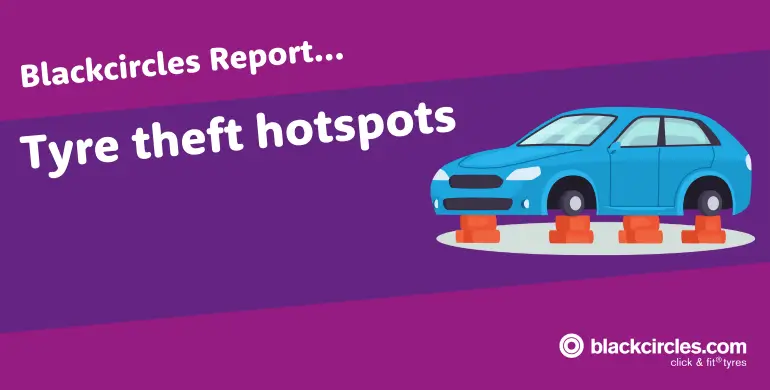
Having your car tyres stolen isn’t just an inconvenience – it can leave your car undrivable, rack up unexpected costs, and even compromise tyre safety if replacements aren’t fitted properly. And for thousands of drivers across the UK, it’s a problem that keeps happening.
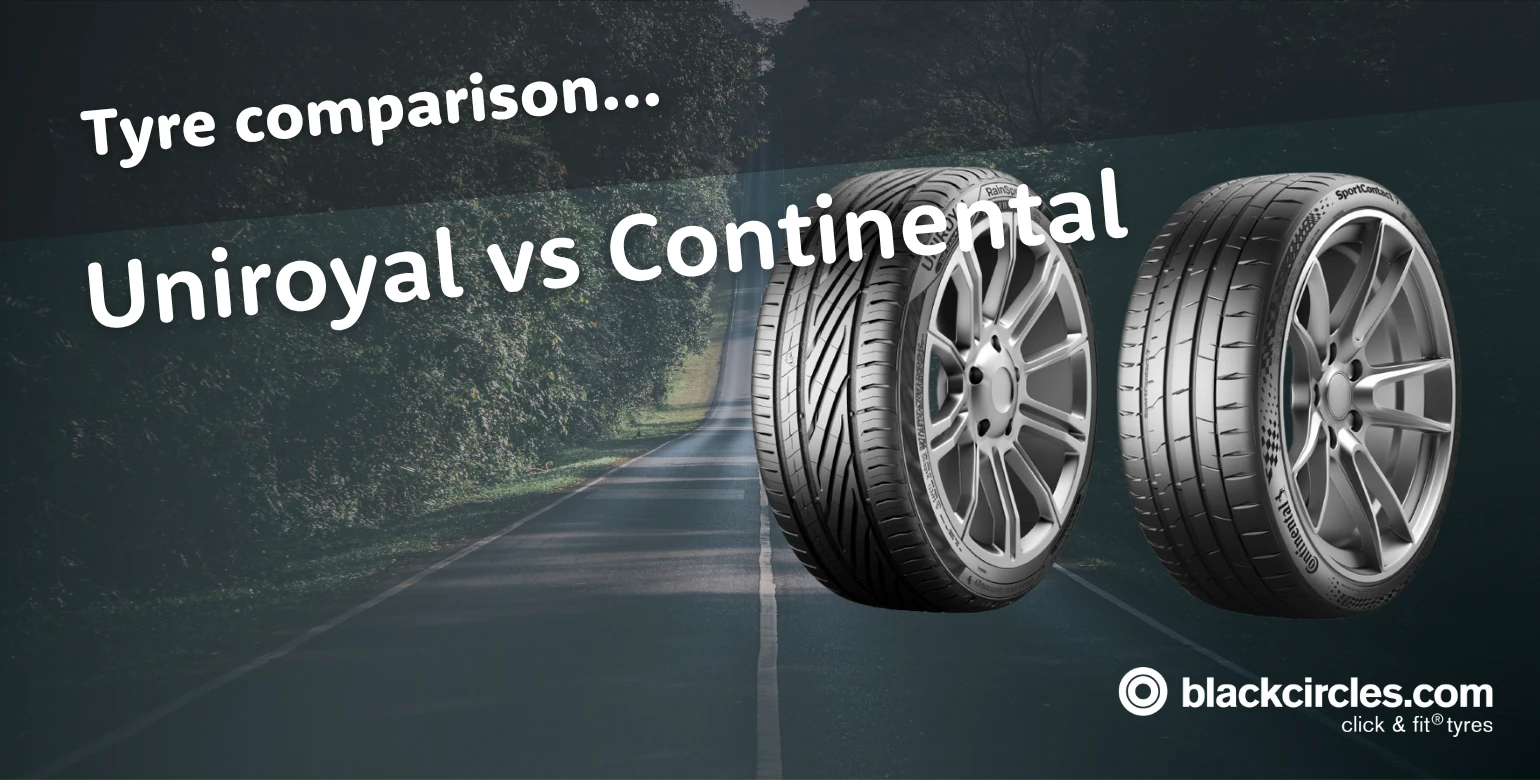
If you’ve narrowed down to these two manufacturers when considering your next tyres, this article will guide you to making the right choice for your purchase.

As part of Tyre Safety month, we continue our look at key parts of tyre maintenance. One of the key aspects of this, is tyre air pressure. Let’s start simple. Your tyres need air - not too much, not too little. A specific recommended pressure level, advised by the vehicle manufacturer.

This article will explain how a car horn can fail your MOT through the lens of the DVSA MOT guideline and how to avoid MOT failure in this category.

Black Friday is almost here. And as the day gets closer many drivers will be planning on taking advantage of offers and opportunities to save on premium tyres. Continental is one of the most recognised names in the industry. They have a strong reputation for safety, innovation, and performance.

Black Friday is not far away. Although it is best known for tech and fashion bargains, for many car owners it is a good time of the year to bag some great savings on tyres. Premium tyres often take the spotlight. However, Dynamo is an increasingly popular choice for motorists, especially those who want reliable performance at a more affordable price point.

Black Friday is approaching. As such, there are many drivers who will be planning to look for opportunities to save money on their next set of tyres. A popular tyre brand that motorists often search for during the Black Friday period is Bridgestone - a global manufacturer renowned for premium quality, innovation, and performance.
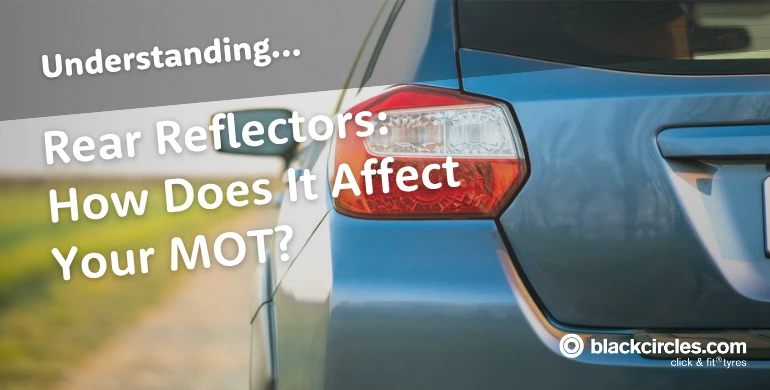
This article will explain how vehicle rear reflectors can fail your MOT through the lens of the DVSA MOT guideline and how to avoid MOT failure in this category.

With several tyre sizes in circulation, it can sometimes be unclear what the correct pressures should be for your car. To make it easier, we’ve compiled the official tyre pressure data for the Volvo V60, covering model years 2018 to 2024, based on Volvo’s handbooks.
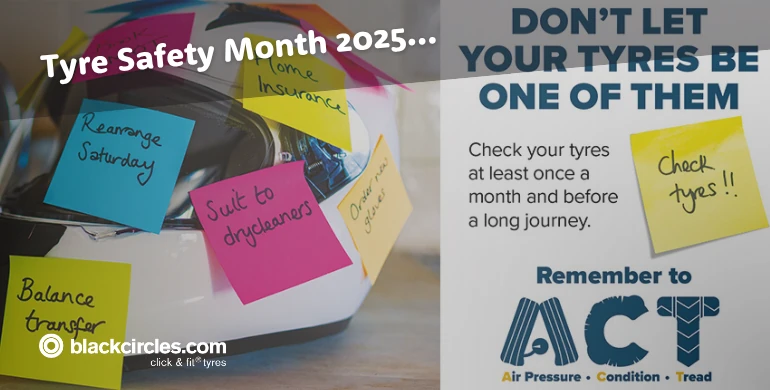
Here at Blackcircles, we’re celebrating the 16th annual Tyre Safety Month, seeking to raise awareness for everything tyre safety.

Choosing tyres can feel like a balancing act. They're one of the most important parts of road safety, given the fact they are the only part of your vehcile in contact with the road. Rightly so, many people will spend a lot of time weighing up the options. If you have found this article, it is because you have likely narrowed down your brand choices to Yokohama and Pirelli.

Class 5 MOTs, differ heavily from the more common classes – explore what this MOT type means for your vehicle today.

A healthy air-con system keeps you comfortable, clears a foggy windscreen quickly, and helps the car run efficiently. What can you do in terms of safe DIY checks? And what maintenance can you carry out that acts as preventative against common issues — whether for petrol, diesel, hybrid or EV systems?

Because of its heavy usage and strategic importance, the M62 regularly undergoes maintenance, resurfacing, and improvement works. These often involve lane closures, full closures overnight, and diversions.
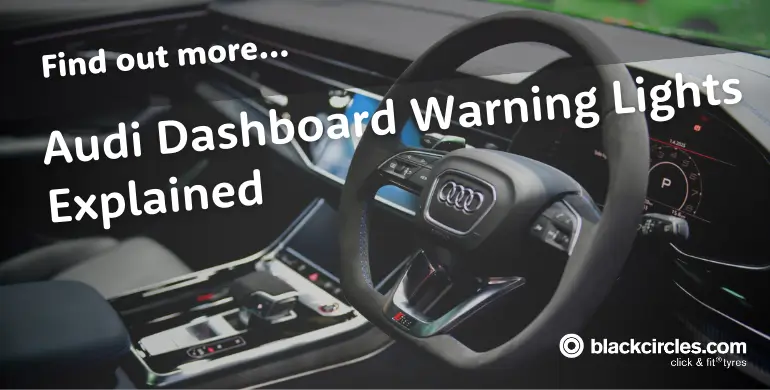
Modern Audis are packed with advanced technology, including driver assistance systems. While this tech enhances safety and comfort, it also means your dashboard may display a wide range of symbols. These lights aren’t decoration—they’re important messages from your car’s onboard systems.

What vehicles are covered in a Class 3 MOT? That’s what we’ll be exploring in this article today.

We’ll explore both brands in detail along with outlining their most popular tyre models to help you decide which might be the better fit for your driving needs.

For most drivers in the UK, the annual MOT test is an unavoidable part of owning a vehicle. Although it can feel like a box to tick, it plays an important role in keeping the roads safe. Despite its importance, many drivers are unsure how MOTs work—there are lots of rules and regulations, and it can seem overwhelming.

Planning to drive in Spain? Whether you are driving in your own car, or hiring one, it’s best to ensure you know the speed limits on the various road types in Spain. This guide gives you the current speed limits, enforcement changes for 2025, typical fines, and practical tips so you can stay safe and avoid the risk of penalties or fines.

We’ve highlighted the technologies that matter for commuting efficiency and mileage, shining a light on some of the most popular high-mileage motorbike tyres according to our customers at Blackcircles.com.

The Toyota Verso was designed as a practical and family-focused people carrier. Combining flexible seating with the reliability and efficiency. Something that Toyota has long been known for. Between 2012 and 2016, the Verso remained a popular choice in the UK market. Thanks to a spacious interior and economical engine options.

This guide explains what each class involves, the vehicle types included, the requirements, and the costs you can expect.

Continental is one of the most respected names in the tyre industry, known for premium engineering, strong safety performance, and wide OE fitment across major manufacturers. Over the past several decades Continental has refined its all-season technology – balancing wet and dry performance with credible winter capability.

If you own a classic car or specialist vehicle, you may be exempt from needing an annual MOT. But that doesn’t mean you’re free from all responsibilities. Let's breaks down everything you need to know about MOT exemptions in 2025.

Wondering what vehicles fall under the class 7 MOT category? This guide will be exploring what a Class 7 test is, the requirements and key aspects of an MOT.

Regularly testing your battery with a multimeter helps you spot problems early before you’re left stranded. This guide will take you through what a multimeter is and provide a clear, step-by-step process to check your car battery at home.

Different vehicle types fall under different MOT classes – with each class outlining the requirements, procedures, and regulations that apply to that category. Read on to find what class your vehicle is, what it means for testing, and why it matters.

If you’ve ever noticed a warning light flash on your Fiat 500, you’re not alone. Fiat uses many of the same diagnostic signals as other manufacturers, but there are some lights and behaviours unique to Fiat, or specific to diesel, hybrid etc.

In this comparison, we’ll take a look at both models, highlighting their key features, strengths, and customer reviews to help drivers understand which tyre may be best suited to their vehicle and driving needs.

The A34 is a key road in southern England. Running from Winchester in Hampshire to Salford, just outside Manchester. The A34 often undergoes essential maintenance, resurfacing, and safety upgrades. Many of which require temporary closures and diversions.

When EV day comes around, electric vehicle fans and car manufacturers alike will be hailing this innovation, so let’s explore what to expect from EV day.

Servicing your car is important for 3 key reasons - safety, performance, and long-term value. Regular car servicing can spot issues before they turn into bigger problems, whilst also helping to improve fuel economy.

In this article, we’ll highlight some of the best motorcycle tyres for wet conditions, highlighting some of the customer favourites at Blackcircles.com.

The Mersey Gateway Bridge is a key bridge crossing over the River Mersey, linking Runcorn and Widnes. Officially opened in October 2017, this six-lane structure provides a critical alternative to the older Silver Jubilee Bridge.

Ensuring your car is regularly serviced might seem like just another chore, but it can also have a knock-on effect on your car insurance.

The Toyota RAV4 has long been a favourite among UK drivers looking for a reliable, spacious, and family-friendly SUV. Over the years, the RAV4 has evolved into a highly efficient and versatile model, offered in both petrol and hybrid formats.
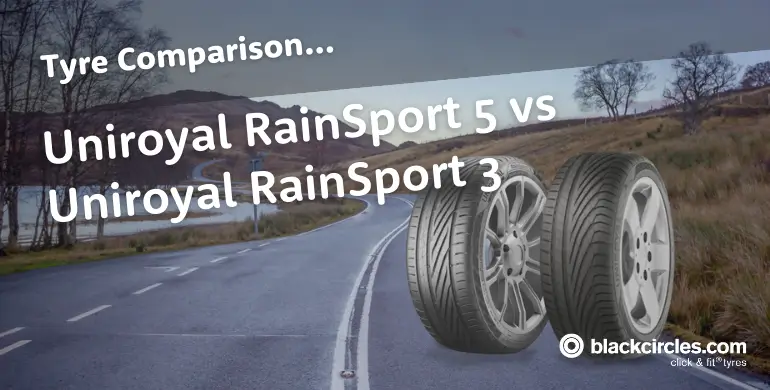
Uniroyal is a renowned name in the tyre industry, consistently delivering high-quality tyres at competitive mid-range prices. Among their most popular tyres is the Uniroyal RainSport 5 and its predecessor, the Uniroyal RainSport 3.

MOT tests don’t only affect your access to driving, but it also affects your car insurance, making it near impossible to get insured if your car hasn’t got a valid MOT certificate.

An MOT failure can feel daunting, but the good news is that the rules around retesting are fairly clear once you know them. In many cases you won’t have to pay the full MOT fee again, and sometimes the retest may even be free.

Modern BMWs are packed with sensors and modules. That’s good news for performance, efficiency, and safety - but it also means more warning lights and error codes. If you’ve ever seen a “Check Engine” light or plugged in an OBD reader only to be met with cryptic numbers like P0171 or P1014, you’ll know how confusing it can feel.

Most people know their car should be serviced once a year, or roughly every 10–12,000 miles. But in practice, many of us stretch that out. A few extra months, maybe even longer. The problem is, small issues can develop into larger, more expensive faults if they’re ignored for too long.

Explore what makes both tyres such reliable all-season models, how our customers rate them, and more in this tyre comparison guide between the Michelin CrossClimate 3 and Pirelli Scorpion Verde All Season.

If you are and around the Newcastle area and need to regularly cross the River Tyne, you’ll know the Tyne Tunnels are a vital link. One that connects North and South Tyneside. The toll you pay ensures the tunnels remain safe, efficient, and dependable. Though it does come at a cost.

Let’s explore what these changes are to MOTs in the United Kingdom, what they are and what they mean for your future tests.

Car warranties provide peace of mind by covering the cost of unexpected repairs. But when it comes to servicing, many drivers worry about whether using the wrong garage could void their warranty.

Which brands belong to which companies? This tyre brand ownership guide will help you understand the connections between the world’s leading tyre makers and the brands they control.

In this article, we’ll compare the two by exploring both Goodyear and Yokohama to help you decide which might be the right fit for your vehicle.

The Toyota Prius is one of the most iconic and trusted hybrid cars on UK roads. Since the launch of its fourth generation in 2015, it has remained a popular choice for drivers. The correct tyre pressure can vary slightly depending on wheel size and whether or not the car is fitted with a full-size spare tyre.
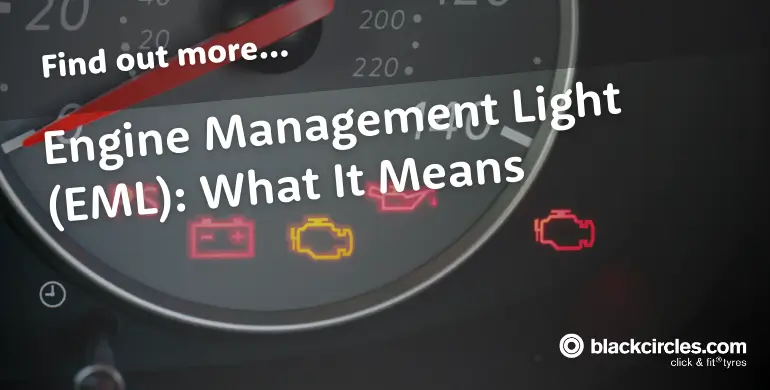
If your engine management light (EML) has come on, you might be wondering whether you can keep driving, what’s causing it, and if it means your car will fail its MOT. This article will take a look at what the engine management light means. In particular the common causes and what you should do next if that light comes on.

With a population of around 50,000, there’s plenty of motorists in this Welsh town that will need their car put through an MOT test annually (after 3 years of car being registered, 4 for Northern Ireland), as well as regular car servicing.

We will outline some of the most popular and effective road motorcycle tyres based on customer interest and the manufacturers’ latest technologies.

If you've ever driven across the Humber estuary, you might’ve wondered whether the toll for the Humber Bridge is justified. Spanning one of the UK's most iconic suspension bridges, the toll supports maintenance and operations. Ensuring the bridge remains safe and reliable.

Blackcircles now offers MOT and servicing through our website. That means you can choose a DVSA‑authorised MOT centre, book a test in Wales, and combine it with servicing in one simple journey – all online.

Keeping your car in top condition is essential for safety and ongoing use. In 2025 Blackcircles.com launched our new standalone MOT and/or servicing options. Which has made booking your MOT or service in the Edinburgh area easier than ever.

In the world of premium driving tyres, Michelin and Bridgestone continue to set the benchmark for performance, reliability, and innovation. In this piece we take a closer look at both tyres. Detailing their features, performance, tyre label ratings, industry recognition, and more.

The A1 is the UK’s longest numbered road, stretching around 410 miles (660 km) from London to Edinburgh. It links major towns and cities including Peterborough, Doncaster, Newcastle upon Tyne, and Berwick-upon-Tweed before crossing into Scotland.

We will be outlining some of the most popular and efficient touring motorbike tyres, based on Blackcircles.com customer data and the innovative technologies developed by the tyre manufacturers.

Whether you're heading to France for a driving holiday or simply crossing the border, understanding French speed limits is essential for a safe journey. Speed limits vary depending on road type, weather conditions, and even driver experience. Unlike Germany, all roads in France are subject to maximum speed restrictions.

The Hyundai Kona has quickly grown into one of the most recognisable small SUVs on UK roads. Since the model was launched in 2017, the Kona has been regularly updated and expanded into hybrid and electric variants. Making it a popular choice for many drivers.

In this guide, we’ll walk through what’s inspected during an MOT when it comes to tyres, the most common reasons for failure, and what you can do to avoid it.

When choosing your next set of tyres, many people will be basing their decision on the same key things. A focus on safety, reliability, and ultimately, value for money. How these criteria can be defined, though, will vary. Today, the two brands we are looking at, Michelin and Uniroyal, sit in different parts of the tyre market.
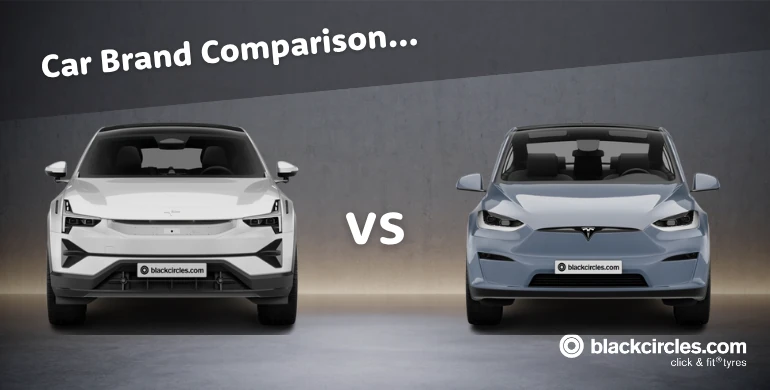
In this comparative breakdown, we’ll outline the key differences between the two brands – comparing production figures, model ranges, pricing, and more – to help you understand how these two electric contenders measure up in today’s evolving EV landscape.

Ronan Pearson has announced he will step down from his TOYOTA GAZOO Racing with IAA seat for the remaining British Touring Car Championship (BTCC) citing personal reasons and unforeseen commercial hurdles. The 23-year-old Scot, who joined the team at the start of the 2025 campaign, has shown impressive form in his debut season.

Selling a car without a valid MOT isn’t illegal, but it does make the process more complicated. If you’ve found yourself in this situation, it’s worth understanding the pros, the cons, and your options.

In this guide, we’ll break down exactly what wheel bearings do, how MOT testers inspect them, and what defects will cause your car to fail its test.

Whether you're planning a business trip, a holiday, or are driving across Europe - understanding Germany’s speed limits is very important. While parts of the German motorway network are famous for having no upper speed limit, there are still clear rules in place that drivers must follow.

Electric vehicles (EVs) are often seen as simpler to run and cheaper to maintain. In many ways, this can be thought of as true. With fewer moving parts and lacking an internal combustion engine, servicing on an EV can be lighter in its scope. However, it is very important to keep to a regular servicing schedule.

This article will show how and where you can watch the 2025 FIA Formula 3 Championship no matter where you live.

We will be looking to outline the most popular run flat tyre models for MINI drivers according to Blackcircles customers, outlining their different features and common themes amongst each tyre.

Formula E is the world’s premier all-electric single-seater racing series. With futuristic cars, street circuits in major cities, and a focus on innovation and sustainability, it’s no surprise that Formula E is attracting a growing global audience.

Hybrid cars are becoming increasingly popular - and for good reason. They offer the fuel-saving, low-emission benefits of electric vehicles, but without the range anxiety that sometimes comes with going fully electric. But as more drivers make the switch, a new question arises: how do you maintain a hybrid properly?

Knowing where to watch F2 races can be tricky depending on your country. Here’s a guide to watching the 2025 Formula 2 season in the UK or wherever you are in the world.

We will be comparing rivalling models, pricing, production, and more – giving you a clear breakdown of how these two electric giants stack up in today’s fast-evolving EV market.

Formula 1 (F1) is the pinnacle of motorsport, with elite drivers, iconic circuits, and global fanfare. Whether you're a lifelong supporter or a new fan drawn to the drama of wheel-to-wheel racing, here's how and where to watch the 2025 Formula 1 season no matter where you are in the world.

In this guide, we’ll break down exactly what wheel bearings do, how MOT testers inspect them, and what defects will cause your car to fail its test.

It’s easy to feel stuck when choosing tyres. There are the heavyweights - Goodyear, Michelin, Continental - the ones you see in every car magazine or hear about from every dealership. But then you spot names like Falken, maybe a little cheaper, maybe with better reviews than you'd expect.

Brake pads are one of those components that don’t attract much attention – that is until something feels off. Maybe the brake pedal feels softer than usual. Or there’s an odd squeal you can’t quite ignore.

All things considered, the idea of having tyres that specialise in SUVs is enticing for these sort of drivers – if you fall under this umbrella, this guide will hopefully aid you in choosing the next tyres for your SUV by outlining the most popular models of Blackcircles.com customers.

Faulty fuel injectors can cause a range of engine issues - and unfortunately, they’re not always obvious right away. The initial signs that there is something wrong with the fuel injector could be something innocuous, like the car running slightly rougher than usual. Or perhaps - it’s taking longer to start, even on warmer days.

In this guide, we’ll explain which dashboard lights will fail your MOT, which ones won’t (but could lead to trouble down the road), and how to stay ahead of them before your appointment.

One of the more important, and often overlooked, aspects of vehicle safety and efficiency is maintaining the correct tyre pressure. Whether you’re heading out on a long journey or just running local errands, properly inflated tyres contribute to better fuel economy, more responsive handling, and improved tyre longevity.

This guide will explore what this means for your car, if you can drive after your stop drive recall, as well as real life scenarios of this happening.

Changing spark plugs is a maintenance task that often sounds more complicated than it actually is. For many car owners, the idea of carrying this out yourself can cause hesitation. However, if you have the right tools and a bit of preparation, it’s a job that most people are able to carry out at home.

This article will outline some of the most popular motorcycle tyres according to our customers at Blackcircles.com, highlighting their key features, customer reviews, and price ranges.

In this guide, we’ll break down how oil leaks are assessed during an MOT, what counts as a serious defect, and how to deal with leaks before test day to avoid a failure.

Explore why no British riders are currently competing in MotoGP, despite the UK’s rich motorsport legacy – and what needs to change to bring them back.

In this guide, we’ll explore what counts as a bonnet defect, how MOT testers assess it, and what you can do to avoid a bonnet-related failure on test day.

Whether you're a long-time fan or just getting into stock car racing, here’s what you need to know about watching NASCAR from outside the U.S.

A worrying new trend has emerged in recent years the rise of “Ghost MOTs.” But what exactly are they, and why should you be concerned?

Two recent generations of P Zero tyres include the ever-popular PZ4 and the newly released PZ5 – this article will be comparing both P Zero models and outline what makes each tyre so innovative.

In this guide, we’ll break down when fog lights are checked, which ones are mandatory, and how a small issue with them could mean the difference between a pass and a fail.

This article will break down how your headlamps are checked during an MOT, the types of faults that could lead to a fail, and what you can do to avoid them.

Michelin is a global powerhouse, renowned for both its innovative tyre manufacturing and its prestigious Michelin Stars in the culinary world. But behind this success lies a standout element of its branding: the beloved Michelin Man.

Your MOT test result can reveal a lot about your vehicle’s reliability and ensure it is safe to drive. Regular servicing, garage visits, and maintenance often help your car remain fit for the road, although having a reliable vehicle model can also help...

When it’s time for new tyres, it’s easy to get overwhelmed. Big names. Bold claims. Endless options. And somewhere in the middle of all that you are likely to find Goodyear and Dunlop. There is a high chance that you will have heard of both. Their reputation and reach goes beyond tyres.

Formula 1 and British GT operate in completely different worlds of motorsport. F1 is unquestionably faster, but British GT delivers its own thrill...

Is the 24 Hours of Le Mans Faster Than Formula 1? No – Formula 1 cars are significantly faster than any Le Mans entry on a single lap.

Once your annual MOT is just round the corner, you should ideally have everything in working order. However, if parts of your vehicle are not roadworthy – including your side repeaters – your car could fail its test.

Is British Superbikes Faster Than Formula 1? In straight-line speed – sometimes. In overall lap time and circuit performance – not even close.

The Indy 500 is faster in a straight line, but Formula 1 is faster almost everywhere else. F1 represents technical complexity, diverse racing styles, and elite road-course engineering.

We’ll be covering every motorcycle tyre dimension and explaining what each mean to give you a better understand on general motorbike tyre sizes.

Formula 1 and IndyCar occupy similar space at the top of open-wheel racing — but follow very different philosophies. F1 is a global showcase of precision engineering and aerodynamic evolution, while IndyCar offers a more cost-controlled, spec-based championship with a wider variety of circuits, including ovals.

When you are trying to choose a new set of tyres, the big names often steal the spotlight – think Michelin, Goodyear and Continental. But there are also very good options in the form of Bridgestone and Falken.

This article will compare both tyres that have defined Michelin’s modern motorcycle tyre production, outlining key features and customer data to better inform you on what tyre suits you the most.

Yes – a cracked wing mirror can result in an MOT failure, but it depends on how severe the damage is. If the crack obstructs or distorts your view, or if the mirror housing is unstable or loose, it will likely lead to a fail.

Let’s explore what brake imbalance is, why it matters, how it’s measured, and what you can do to avoid an MOT fail.

Few events in motorsport are as legendary — or as exhilarating — as the Isle of Man TT (Tourist Trophy). With the 2025 races drawing to a thrilling close, attention now turns to TT 2026, where riders, fans, and machines will again take on the most iconic and dangerous road course on Earth.

Blackcircles offers MOTs and servicing for a wide range of Abarth models, including both petrol and electric vehicles. Our partner garages use quality parts and follow procedures suitable for high-performance sports cars.

At Blackcircles.com, booking your Alfa Romeo MOT or service is simple. Just pop in your car details, compare prices from local trusted garages, and choose a time that suits you. No hassle, no hidden extras—just clear options and expert care.

At Blackcircles.com, booking your BYD MOT or EV service is straightforward. Enter your car details, compare prices from trusted local garages, and choose a convenient time. No hidden extras—just expert care and transparent pricing.

At Blackcircles.com, booking your Chevrolet MOT or service is easy. Just enter your registration, compare prices from trusted local garages, and select a time that works for you. No hidden costs—just expert care and clear pricing.

Blackcircles offers MOTs and servicing for a wide range of Chrysler models, including both petrol and electric vehicles. Our partner garages use quality parts and follow procedures suitable for high-performance sports cars.

At Blackcircles.com, booking your Cupra MOT or service is quick and easy. Just enter your registration, compare prices from trusted local garages, and select a date that suits you. With clear pricing and experienced service partners, it’s a straightforward way to keep your Cupra in excellent condition.

At Blackcircles.com, booking your Honda MOT or service is quick and easy. Just enter your car’s registration, compare prices from trusted local garages, and select a time that works for you. You’ll get transparent pricing and professional care—no hidden fees.

Blackcircles offers MOTs and servicing for a wide range of Jaguar models, including both petrol and electric vehicles. Our partner garages use quality parts and follow procedures suitable for high-performance sports cars.

At Blackcircles.com, booking your Jeep MOT or service is simple. Enter your registration, compare trusted local garages, and choose a convenient time. With upfront pricing and expert care, you’ll get maintenance you can rely on—just like your Jeep.

At Blackcircles.com, booking your MOT or service is straightforward. Enter your registration, compare prices from trusted garages, and select a time that suits you. You’ll receive clear pricing and high-quality service, all handled with the attention to detail your Lexus deserves.

At Blackcircles.com, booking your MOT or service is quick and easy. Enter your registration, compare prices from trusted garages, and choose a date that works for you. All servicing is carried out by professionals with experience in performance and specialist vehicles.

Blackcircles offers MOTs and servicing for a wide range of Maserati models, including both petrol and electric vehicles. Our partner garages use quality part and follow procedures suitbale for high-performance sports cars.

At Blackcircles.com, booking your MOT or service is fast and simple. Enter your registration, compare prices from trusted garages, and pick a time that suits you. You’ll get expert care, clear pricing, and no hidden costs—backed by a nationwide network.

At Blackcircles.com, booking your MOT or service is fast and straightforward. Enter your registration, compare prices from trusted local garages, and choose a time that suits you. With expert technicians and clear pricing, your Mitsubishi receives the care it needs—without any hidden extras.

Blackcircles offers MOTs and servicing for a wide range of Nissan models, including both petrol and electric vehicles. Our partner garages use quality parts and follow procedures suitable for high-performance sports cars.

At Blackcircles.com, booking your Peugeot MOT or service is quick and simple. Enter your registration, compare trusted garages in your area, and choose a time that works for you. With transparent pricing and expert technicians, your Peugeot is in good hands—whatever you drive.

Blackcircles offers MOTs and servicing for a wide range of Polestar models, including both petrol and electric vehicles. Our partner garages use quality part and follow procedures suitbale for high-performance sports cars.

Blackcircles offers MOTs and servicing for a wide range of Renault models, including both petrol and electric vehicles. Our partner garages use quality parts and follow procedures suitable for high-performance sports cars.

Blackcircles offers MOTs and servicing for a wide range of Subaru models, including both petrol and electric vehicles. Our partner garages use quality part and follow procedures suitbale for high-performance sports cars.

Blackcircles offers MOTs and servicing for a wide range of Suzuki models, including both petrol and electric vehicles. Our partner garages use quality part and follow procedures suitbale for high-performance sports cars.

If you're wondering what type of car servicing your car needs, it's probably time to get something booked in. While an MOT is mandatory, car servicing isn’t a legal requirement in the UK. Which means many drivers overlook it until a warning light flashes or something feels off.

No — Formula 1 cars are significantly faster than NASCAR vehicles in nearly every aspect except raw straight-line speed on superspeedways.

Few names are as synonymous with the British Touring Car Championship (BTCC) as Jason Plato. With a charismatic presence and a career that spans over two decades, Plato is revered not only for his record-setting performances but also for the entertainment and drama he brought to the sport.

This article will be comparing both tyre brands by outlining their background and most popular models according to Blackcircles.com customers.

Formula 1 and the British Touring Car Championship (BTCC) might both serve up high-octane thrills, but beyond the roar of engines and the checkered flags, these two racing series couldn’t be more different. One is a global spectacle of cutting-edge technology and elite precision; the other is a fiercely competitive, wheel-to-wheel battleground right here in the UK.

No — Formula E is significantly slower than Formula 1. While Formula E focuses on electric innovation and sustainability, Formula 1 remains the undisputed benchmark for speed, power, and technological advancement in circuit racing.

At Blackcircles.com, booking an MOT or service for your Audi is fast and simple. Enter your car details, compare prices from trusted garages near you, and choose an appointment that fits your schedule.

At Blackcircles.com, booking your BMW MOT or service is simple. Just pop in your car details, compare prices from local trusted garages, and choose a time that suits you.

At Blackcircles.com, booking your Citroën MOT or service is quick and hassle-free. Enter your registration, compare prices from local trusted garages, and choose a date that suits you.

At Blackcircles.com, booking your Dacia MOT or service is straightforward. Just enter your vehicle registration, compare prices from trusted local garages, and choose a date that fits your schedule.

At Blackcircles.com, booking your DS MOT or service is simple. Enter your registration, view trusted local garage options, and choose a date that works for you.

At Blackcircles.com, booking your Fiat MOT or service is quick and simple. Enter your registration, compare prices from trusted local garages, and choose a time that suits you.

At Blackcircles.com, booking your Ford MOT or service is simple. Just pop in your car details, compare prices from local trusted garages, and choose a time that suits you.

At Blackcircles.com, booking your Hyundai MOT or service is quick and convenient. Just enter your vehicle details, compare garage prices, and choose a time that suits you.

Booking a Kia MOT or service through Blackcircles.com is quick and convenient. Simply enter your vehicle details, compare quotes from trusted local garages, and choose a time that fits your schedule.

Blackcircles offers MOT and servicing for a wide range of Land Rover models, including both petrol and-service electric vehicles. Our partner garages use quality parts and-service follow procedures suitable for high-performance sports rovers.

At Blackcircles.com, booking your Mazda MOT or service is quick and easy. Just enter your registration, compare garage prices, and choose a date that works for you.

Blackcircles offers MOT and servicing for a wide range of Mercedes models, including both petrol and-service electric vehicles. Our partner garages use quality parts and-service follow procedures suitable for high-performance sports rovers.

At Blackcircles.com, booking your Mini MOT or service is quick and straightforward. Enter your vehicle details, compare prices from trusted local garages, and pick a date that suits your schedule.

At Blackcircles.com, booking your Seat MOT or service is simple. Just enter your registration, compare local garage prices, and choose a time that works for you.

Blackcircles offers MOTs and servicing for a wide range of Skoda models, including both petrol and electric vehicles. Our partner garages use quality parts and follow procedures suitable for high-performance sports cars.

At Blackcircles.com, booking your Tesla MOT or EV service is simple. Enter your registration, compare trusted local garages with EV experience, and choose a date that works for you.

Blackcircles offers MOTs and servicing for a wide range of Toyota models, including both petrol and electric vehicles. Our partner garages use quality parts and follow procedures suitable for high-performance sports cars.

At Blackcircles.com, booking your Vauxhall MOT or service is fast and straightforward. Just enter your registration, compare trusted local garages, and choose a time that suits you.

Blackcircles offers MOTs and servicing for a wide range of Volkswagen models, including both petrol and electric vehicles. Our partner garages use quality parts and follow procedures suitable for high-performance sports cars.

Blackcircles offers MOTs and servicing for a wide range of Volvo models, including both petrol and electric vehicles. Our partner garages use quality parts and follow procedures suitable for high-performance sports cars.

We will unpack the real differences between F1 and MotoGP, from the machines and the skills required to the race formats, technology, and tyre demands.

We will unpack the real differences between F1 and MotoGP, from the machines and the skills required to the race formats, technology, and tyre demands.

We will unpack the real differences between F1 and MotoGP, from the machines and the skills required to the race formats, technology, and tyre demands.

The M4 motorway is the third largest motorway in the UK and runs from London to South Wales. Acting as a vital connection between England and Wales. Find out the planned road closures over the next 7 days.

The UK is set to introduce digital driving licences in 2025, marking a significant shift in how citizens interact with public services.

Dashboard warning lights can be worrying at the best of times – especially when your MOT is just around the corner. An ABS warning light showing on your dashboard is no exception. If it’s appearing, you might be wondering: will this cause my car to fail its MOT?

Blackcircles is proud to announce the launch of its first-ever mobile tyre fitting van, offering customers a new level of convenience with expert tyre services delivered directly to their doorstep.

We will be comparing the Bridgestone Turanza T005 and 6 throughout this article, outlining the key features of both models and highlighting key customer habits regarding the two tyres.

A car’s annual MOT test is a legal requirement designed to ensure that vehicles meet the minimum safety and environmental standards to be roadworthy. It's not just a routine check-up - it's a critical assessment of whether your vehicle is safe to drive.

At first glance, Formula 1 and Formula 2 might look pretty similar with same style of cars, same race weekends, and a lot of the same tracks. But dig a little deeper, and you'll find they’re actually really different.

Poor visibility is more than just inconvenient — it’s dangerous. MOT rules account for visibility-related issues that make driving unsafe, including cracked windscreens and faulty wipers.

Steering issues are among the most hazardous faults on any MOT report. If a car’s steering components are loose, worn, or likely to fail, it can’t be driven safely — and will fail its MOT instantly.

While often overlooked, nuisance-related faults — like excessive exhaust smoke or noise — can still result in a 'Dangerous' MOT fail. These issues often indicate poor maintenance or mechanical faults.

Lights and electrical systems are essential for visibility and communication on the road. If your car's brake lights, indicators, or headlights are inoperative, you're putting yourself and others at risk.

Brake performance is one of the most critical aspects of vehicle safety. Any major failure in this system — like a leaking master cylinder or inoperative servo — is treated as a serious risk by MOT testers.

Your car’s body isn’t just cosmetic - it includes structural and safety-critical elements like doors, chassis, bumpers, and tow bars. Serious corrosion, insecure parts, or sharp edges can all qualify as dangerous defects.

Your car’s suspension system, tyres, wheels, and axles play a critical role in safety, stability, and road handling. When components are damaged or defective, the vehicle becomes unsafe and will fail under the ‘Dangerous’ category.

From practice and qualifying to Sprint races and Grand Prix Sundays, broadcasters across the globe are offering comprehensive coverage. Here's a country-by-country breakdown of where to watch MotoGP in 2025.

The M5 is one of the major motorways in England. It begins at Junction 8 of the M6 near West Bromwich in the Black Country and runs to Exeter, in Devon. In total, the motorway spans across around 163 miles, and connects the heartland of the Midlands to the South West.

Can worn brake discs actually cause your vehicle to fail its MOT? Let’s explore everything you need to know about this mechanism and how it relates to your MOT.

When considering a flat or dead battery and the effect this has on the outcome of the MOT test, it is not a cut-and-dry answer. In short, yes, a dead battery can result in an MOT test failure. But not in isolation. The failure would come under some specific circumstances.

These two innovative tyres will be compared throughout this article today, outlining key technologies as well as customer data on the Pilot Sport 5. Once we gather more information on CrossClimate 3 purchasing behaviour, we will look to update this article.

The engine management light is your car’s way of telling you something isn’t quite right. But does seeing it show up on your car’s dashboard mean your car will automatically fail its MOT test?

There are a number of benefits to regularly booking your car in for a service. The top one being that if you make sure your vehicle is seen to at least once a year, you are significantly helping to ensure that your car remains in top condition for as long as possible.

This comparison article will outline key features of the two highly anticipated tyres and what the key differences are between them.

Squeaky brakes might seem like a minor annoyance, but they could be a warning sign that your braking system needs attention. Learn what causes the squeal when to call in the pros.

Faulty car tyres are a serious road safety hazard that can cause vehicle problems such as longer braking distances, loss of control, and even catastrophic blowouts. Whether the problem stems from wear and tear, manufacturing defects, poor maintenance, or incorrect tyre fitting, the consequences can be life-threatening for drivers, passengers, and other road users.

This guide explains how a windscreen crack can affect your MOT result, the rules surrounding visibility and driver safety, and what steps to take if your screen is damaged.

That sharp ticking sound coming from under your bonnet can be both confusing and worrying. Is it something minor - or a sign of serious engine trouble? Regardless of the scenario, it’s important to understand what’s causing it.

TOCA stands for Touring Car Association, and it’s the governing and promotional body that runs the BTCC. In short, TOCA is the organisation that ensures the championship happens.

In this article, we’ll take a closer look at the Vector 4Seasons Gen-3, including its features, performance, industry accolades, and more. We’ll also introduce the CrossClimate 3’s key benefits, with more detailed analysis to follow once further information becomes available.

Michelin continues to raise the bar in all-season tyre performance, that being highlighted in their ever-successful CrossClimate tyre series. The Michelin CrossClimate 2 SUV, introduced in 2022, marked a significant evolution in the brand's approach to tyres built specifically for larger vehicles.

This article will explore how Continental’s all-season tyre stacks up to Michelin’s CrossClimate 3, with more details to come as the CrossClimate 3 becomes available to UK customers in the near future.

This article will compare both the new releases by Michelin, outlining their new innovative technologies these tyre feature.

In this article, we’ll explore the standout features of the Michelin CrossClimate 2 and highlight how it has served drivers since its release. We’ll also introduce the CrossClimate 3, Michelin’s latest addition to the range, and explain how it is expected to improve upon its predecessor.

Discover the all-new Michelin CrossClimate 3 — engineered for superior grip, durability, and safety in every season. Learn about its innovative features, performance benefits, and official release date. Drive confidently year-round with Michelin’s latest tyre technology.

If your airbag light is showing, it may indicate that there is an issue with your airbag or seatbelt, which should be seen to as soon as possible.

The BTCC has revised its 2026 race calendar to avoid clashes with the FIFA World Cup. Key dates at Thruxton, Croft, and Oulton Park have been moved. See the full updated schedule.

Explore the full 2026 BTCC race calendar, including new dates and circuit changes due to the FIFA World Cup. Get race-by-race previews, from Donington Park to Brands Hatch.

In this guide, we’ll explain exactly how a number plate can cause an MOT failure, what the official DVSA rules are, and what steps you should take if your number plate fails the test.

Jake Hill claimed victory in an intense Race 1 at Brands Hatch, making the most of his Laser Tools Racing machine to hold off debut podium-finisher Charles Rainford by just 0.662 seconds.

In this guide, we’ll break down the most common MOT faults, explain the difference between minor, major, and dangerous defects, and help you understand what each type means for your vehicle.

No one likes their regular route being disturbed or made difficult due to road works and closures. Road maintenance in the UK often draws criticism from motorists. Whether it's the potholes that can damage your car tyres or the disruption caused by fixing them. But which local authorities spend the most time repaiing their roads?

Electric vehicles (EVs) are an increasingly popular option for motorists looking for a new car. One question that often comes up for new car owners is, do EVs need servicing?

What are the MOT rules for historic vehicles? And what makes them different to modern vehicles? Let’s explore the world of classic car MOTs.

The British Touring Car Championship (BTCC) is one of the most prestigious and competitive racing series in the UK, but many fans wonder: are BTCC drivers actually paid? The answer is: Yes, but it depends… on the driver's experience, success, team affiliation, and, crucially, their financial backing.

The British Touring Car Championship (BTCC) keeps fans on their toes with a unique qualifying format and dynamic race grids across each weekend. Here's a straightforward breakdown of how it all works.

If you're a fan of the British Touring Car Championship (BTCC), there's no better way to show your support than by wearing your favourite team’s gear or decorating your space with official memorabilia. Whether you're backing a specific team, a driver like Ash Sutton or Aiden Moffat, or just want to rep the BTCC logo, this guide will point you to the best places to buy authentic BTCC merchandise.

The M1 motorway is one of the most vital transport routes in the United Kingdom. It links London with major cities in the north such as Leeds and Sheffield. The whole motorway stretches approximately 193 miles (311 km). It was the country’s first full-length motorway and today remains a crucial part of the UK’s road infrastructure.

From Minis to Mustangs and from legends like Jim Clark to modern titans like Ash Sutton, the British Touring Car Championship (BTCC) has crowned a diverse range of champions and cars over the decades.

Learn how to know if you have an MOT or not and how to know when your next MOT date is.

A full car service is best carried out once a year or once every 12,000 miles – whichever comes first. The full car service is a good way to keep your car in peak performance for as long as possible. But it’s more than just routine maintenance...

Across three highly competitive races, both title favourites and new challengers went head-to-head, with varying track conditions and tactical calls shaping the outcomes.

In this article, we’ll compare Bridgestone and Firestone tyres, highlighting their key strengths and helping you decide which brand might be the best fit for your car and driving needs.

This article contains a full breakdown of who’s driving what at the BTCC this season, manufacturer by manufacturer.

Although it is not a legal requirement, a major car service is a comprehensive set of checks and replacement parts. It goes even further than the work and checks that you can expect during a full or interim car service.

The British Touring Car Championship (BTCC) is renowned for its exhilarating races and competitive field, featuring cars that, while based on production models, are extensively modified for performance. Understanding the speed and power of these vehicles offers insight into the engineering prowess behind the championship.

The clutch system is an important part of a car that runs on a manual transmission. It is fundamental in controlling the gear changes of the car – making it vital to the smooth running of your vehicle.

Success in the British Touring Car Championship isn’t just about crossing the line first, it’s about scoring consistently across every race weekend. With three races per round, bonus points for performance, and multiple titles in play, the BTCC points system is designed to reward both outright pace and smart, strategic driving.

In this article, we explain what happens if you’re stopped without an MOT, how you could be caught, and the wider impact on your insurance, tax, and even your ability to sell your vehicle.

The British Touring Car Championship (BTCC) is set to deliver one of its most accessible and exciting seasons yet in 2025. With new broadcasting deals across traditional TV and digital platforms, fans now have more ways than ever to tune in and catch every high-speed moment.

Keeping your vehicle running smoothly requires more than just an annual service - especially if you’re clocking up the miles. That’s where an interim car service comes in.

Expect the usual all-star cast including Aiden Moffat, Jake Hill, Ash Sutton, Tom Ingram, and Josh Cook to go head-to-head in cars from BMW, Ford, Honda, Hyundai, and Toyota – with bumper-to-bumper action guaranteed all weekend long.

In this guide, we cover everything you need to know about driving without an MOT, from penalties and legal exceptions, to how to avoid missing your next test.

In a groundbreaking move for motorsport and digital media alike, the British Touring Car Championship (BTCC) announced it will broadcast all race weekends live on TikTok for the second season in a row.

The M25 motorway is one of the most important parts of the UK's road network. Acting as a ring around the Greater London area, the M25 covers around 117 miles (188 km). Which makes it one of the busiest orbital roads in the whole of Europe.

Knowing what’s inspected in your MOT – and what commonly causes failures – gives you the best chance of passing first time.

The 2025 British Touring Car Championship heads to Croft Circuit for Rounds 16–18 on August 2–3, marking the start of the second half of the season.

Your car’s MOT might feel like one of those things that creeps up on you—but it doesn’t have to. Knowing how early you can book an MOT can help you plan ahead, avoid last-minute stress, and stay on the right side of the law.

In this article, we’ll compare both Hankook and Yokohama, showcasing some of their most popular models to help you decide which manufacturer might be the right fit for your vehicle and driving needs.

Once a car is over 3 years old, most vehicles in the UK are required by law to undergo the annual MOT Test. It’s important to prepare your car for an MOT to give yourself the best chance of passing the test the first time.

The 2025 British Touring Car Championship heads to the legendary Silverstone Circuit on September 20–21 for Rounds 25–27, marking the penultimate event of the season.

The British Touring Car Championship heads north for its only Scottish round of 2025, with Rounds 19–21 taking place at the spectacular Knockhill Racing Circuit on August 16–17.

In Northern Ireland, new vehicles need to go through their first MOT test after four years. This approach differs from the three-year requirement that is found in the rest of the United Kingdom.

In this guide, we’ll cover everything you need to know about the motorcycle MOT process, how long it typically takes, what happens if your bike fails, and how to get prepared before test day.

The 2025 British Touring Car Championship has officially launched at Donington Park, unveiling a 24-car grid for the new season and ushering in a bold new era with 100% fully sustainable fuel.

The 2025 British Touring Car Championship powers into Thruxton for one of the fastest and most thrilling rounds of the season. Known as the quickest circuit in the UK, Thruxton is all about high-speed corners, bravery, and bold overtake.

The 2025 British Touring Car Championship roars into Snetterton for Round 3 of the season, bringing world-class tin-top racing to Norfolk’s most challenging track. Known for its mix of high-speed straights and technical corners, Snetterton’s 300 Circuit is a true test of car and driver.

Goodyear has stepped up as the official title sponsor for the 2025 Goodyear 4 Hours of Silverstone, marking the return of the European Le Mans Series (ELMS) to the United Kingdom after a six-year hiatus.

The British Touring Car Championship (BTCC) is poised to make a major step forward in sustainability with the introduction of a 100% sustainable fuel for the 2025 season – and championship boss Alan Gow believes this could just be the beginning.

In this article, we’ll explore whether it’s worth combining the two appointments, the benefits of doing so, and how it could save you both time and money in the long run.

In the UK, there is a set limit on the maximum cost that a garage can charge for MOTs. This is set by the UK Government – and it is illegal for a garage to charge more than the set maximum price.

Let’s take a closer look at the risks of riding a motorbike in the rain and pick up a few useful tips to help make the journey a little safer and more manageable.

As the motorsport world increasingly embraces green technologies, speculation abounds regarding the future propulsion methods of the British Touring Car Championship (BTCC).

The British Touring Car Championship (BTCC), a beacon of innovation in national motorsport, is set to introduce a series of significant changes for its 68th season in 2025.

The 2025 British Touring Car Championship returns to the iconic Brands Hatch circuit for two unmissable weekends — hosting both Round 2 and the Season Finale.

BTCC organisers TOCA have announced a major broadcasting upgrade for the 2025 season, confirming that every race day – including all support series – will be streamed LIVE worldwide on the official BTCC YouTube channel.

In this guide, we’ll break down the most common MOT failures, what testers look for, and how to prepare your car in advance.

Since January 30th, 2023, a fully enforced Clean Air Zone (CAZ) has been in place across Newcastle and Gateshead. So, what does this mean for local drivers? Where does the CAZ apply, and who has to pay? Let’s break it down.

In this guide, we’ll break down the differences between timing belts and chains, how to tell which one your car uses, and when it might be time for a replacement.

Which areas in the UK have the most potholes, and which local authorities are the most proactive regarding repairing roads? To find out, we carried out a series of Freedom of Information requests, asking for the number of potholes recorded and repaired in each council area over the past five years.

What does Clean Air Zones mean for Sheffield motorists? Where is Sheffield’s CAZ located? Let’s answer that now.

Squeaky brakes can be annoying. But more importantly, they can be a warning sign. While a bit of noise now and then isn’t always something to panic about, it’s worth understanding what might be causing it.

The 2025 British Touring Car Championship kicks off at Donington Park with a triple-header on the National circuit, as the East Midlands venue opens the season for the fourth year in a row.

Formula 1 is a sport steeped in history, tradition, and reverence for its past. One of the most poignant tributes in its modern history is the retirement of car number 17, a decision made in memory of Jules Bianchi

So if you’re considering a new set of tyres and wondering which all-terrain models are worth the investment, this article guide will explore some of the top-rated all-terrain tyres on Blackcircles.com.

As the 2025 British Touring Car Championship (BTCC) season approaches, it's time to lock in those all-important race weekends.

When heading to your local Morrisons, you might wonder, Can I get my tyres changed while I’m here? At select Morrisons locations, the answer is yes — you can have your tyres fitted while you do your weekly shop.

Each type of service features different set of checks and maintenance tasks, tailored to suit your car’s mileage, age, and overall condition, which will be covered in this article today.

The 2025 Spring Statement, delivered by Chancellor Rachel Reeves, didn’t introduce any major new tax changes for drivers—but that doesn’t mean motorists are off the hook. If you're wondering how the latest economic update affects your wallet as a motorist, here’s a breakdown of what you need to know.

This article will cover key features, reviews, awards, and more to highlight what makes these models so great.

Whether you’re driving to the coast, heading off on a family road trip, or just out enjoying the sunshine—summer driving brings its own challenges. From hot roads to heavy traffic, your car needs a bit of extra care. Here’s how to stay safe, protect your tyres, and keep your summer journeys stress-free.

In this guide, we'll be covering essential tips to help you stay safe when driving in foggy conditions, from using your vehicle's lights effectively to adjusting your speed and maintaining safe distances.

If you’re planning to drive in London—whether you’re a local or visiting for the first time—you need to be well-prepared. London’s roads are famous for being busy and a bit tricky, with strict rules and a range of charges that can easily catch the unwary.

The route from the UK’s capital to Paris may be a long one, but it's well worth it for those seeking the freedom of a road trip and the chance to explore scenic stops along the way.

Both Nankang and Kumho create tyres that are able to cater to different needs. And budgets. Making their tyres a versatile choice for various driving conditions.

Finding your Toyota Corolla tyre pressure is an important aspect of car maintenance. Depending on the year your Toyota Corolla was produced, the recommended tyre pressure as well as the size of tyre your car requires may vary.

Looking for the best budget tyres on the market? This guide will be outlining the most popular budget tyre models according to our customers, shining a light on their technologies and what Blackcircles.com customers rate these tyres.

Lando Norris secured a sensational victory at the 2025 season-opening Australian Grand Prix, converting his pole position into a hard-fought win amid chaotic weather conditions.

In key store locations, the answer is yes. You can have your tyres fitted while you do the weekly shop. This is thanks to a partnership with Blackcircles.com.

Whether it is a dazzling sunrise on your morning commute, or the glare of a setting sun in the evening, it's important to take the right precautions to remain safe on the road.

Whether you’re carrying out your driving lessons, recently passed your test, or just simply new to motorways even though you’re an experienced driver, these tips and frequently asked questions will hopefully set your mind at ease before embarking on motorway driving.

If you've ever seen a warning light flash up on your BMW dashboard, you’re not alone. Modern BMWs are packed with advanced sensors that keep track of everything from engine performance to tyre pressure.

If you’ve noticed a cut, bulge, or crack in your tyre’s sidewall, you might be wondering: can it be repaired, or does it need replacing? In this guide, we’ll break down everything you need to know about sidewall damage, including the types, causes, risks, and whether repairs are possible.

In this article, we’ll be comparing the Pilot Sport 4 and the PremiumContact 6, exploring their key features, performance attributes, and what customers have to say about them.

Michelin and Bridgestone are two of the biggest tyre manufacturing companies on the market, thanks to decades of innovation. Within the many tyres that you will find in both catalogues, two very popular models include the Turanza T005 and the CrossClimate 2.

This article will outline the most purchased mid-range tyres by our customers at Blackcircles.com, highlighting their key features and how our customers rate them.

Maintaining the right tyre pressure for your Hyundai i30 is an important part of maintaining your vehicle. Depending on the size and year of your Hyundai i30, you may find there are slight variations in the recommendations from the manufacturer...

The hard shoulder is one of the most misunderstood parts of a motorway. While it plays a crucial role in keeping drivers safe, its use has evolved with the introduction of smart motorways...

In this guide, we’ll explain what rolling resistance is, how it impacts performance, and how to reduce it for a more efficient drive.

Once you have your provisional driving licence, you are able to start driving under the correct supervision – be that a driving instructor or an experienced family member/friend. Practice your driving by hitting the roads with a provisional licence is a very important step in...

You may be stuck trying to decide between these two brands. In many ways they can be seen to be quite similar. Both Falken and Kumho are considered mid-range brands. Both known for their balance of performance and affordability.

But they are called bus lanes for a reason – only buses are allowed to drive through them! However, in the case of you accidentally driving through a bus lane, you might want to know what the fines are, or maybe even just understand the rules and regulations of bus lanes in the UK.

In this guide, we’ll walk you through the steps to check your transmission fluid properly, whether your vehicle has a dipstick or a sealed transmission system.

From road positioning to overtaking and adjusting to roundabouts, understanding how to handle an LHD vehicle on UK roads is essential for safety and compliance if you’re planning on driving these vehicle types. In this guide, we’ll cover everything you need to know about driving a left-hand drive car in the UK.

See the average UK fuel cost over the past 52 weeks. But, first things first, what determines the price of fuel? The cost of petrol and diesel at the pump isn’t set at random - it’s influenced by a mix of global and local factors...

This article will be comparing the two recent models of this series, that being the Eagle F1 Asymmetric 5 and Eagle F1 Asymmetric 6. By analysing key features and outlining real customer data, we can start to paint a picture on what the key differences are between the two premium tyre models.

If you're looking for the best premium tyres available, the following models are among the most popular choices for Blackcircles.com customers seeking high-end performance, comfort, and durability.

Ensuring that your Volvo V40 tyres are maintained at the correct tyre pressure is an important piece of car maintenance. Depending on your tyre size, you may find that the correct tyre pressure required will vary.

The thought of checking and/or topping up your oil might seem like a hassle or something only mechanics should do, but it's actually a quick and simple task that anyone can handle. If you're not sure how to do it, this step-by-step guide will show you the right way to check and top up your engine oil.

Switching to an electric vehicle (EV) is an excellent way to cut fuel costs and reduce emissions-but how much does it actually cost to charge an EV? Whether you're topping up at home, using workplace charging, or relying on public charging stations, the cost varies significantly

There are plenty of options to choose from, and a lot of information out there to sift through. If you’ve made it this far, you have likely narrowed your options down to the Michelin Pilot Sport 4 and the Goodyear Eagle F1 Asymmetric 6.

Using data from real rider experiences, technical specifications, and key performance comparisons, we’ll be breaking down the strengths of both models to determine what makes them two of the most sought-after motorcycle tyres in the sport touring category.

The Professional Darts Corporation (PDC) announces Falken Tyres as its new official tyre partner for 2025. The partnership also includes special promotional activities featuring top darts talents.

Driving in strong winds can be challenging, especially on exposed roads or when overtaking high-sided vehicles. Here’s what you need to know about driving in strong winds—and how to minimise the risks.

This guide will take you through everything you need to know about getting your motorcycle licence, including training, tests, and costs.

Given that 43.8% of fatal crashes occur in the timeframe of 4pm-11:59pm, it’s safe to say that you need to take extra precaution when planning and understand how to navigate on driving in the dark.

If you've ever driven through the Midlands, you've probably wondered whether the M6 Toll is worth the cost. Designed to bypass congestion on the regular M6, this privately operated motorway promises faster, more reliable journeys - but at a price.

For BMW drivers, a variety of run flat tyre models are available, each offering different performance benefits. This guide will highlight the most popular options, showcasing the run flat tyres most commonly chosen by BMW owners in recent years.

Michelin and Yokohama are both reputable tyre manufacturers, each with offerings across various categories and price points.

So what makes these tyre brands so great, you might ask? That’s exactly what this article will explore today, highlighting their innovative tyre models, advanced technologies, and standout performance features.

The Toyota Auris is a compact car first introduced by Toyota in 2006. It was a replacement for the Corolla hatchback in certain markets. There are a lot of options on the market...

Looking for the cheapest tyres possible? You’re on the right page, as this article will be acting as a guide in outlining what the most popular all-season budget tyres are according to Blackcircles.com customers.

This article will be distinguishing between the two season tyres, what the most popular models are, and what tyre type you should consider.

Unlike regular compressed air, which contains a mix of oxygen, nitrogen, and other gases, nitrogen inflation offers advantages such as improved pressure retention, reduced moisture build-up, and potentially enhanced tyre longevity.

Adaptive Cruise Control is an advanced driving assistance system (ADAS) that adjusts your speed based on traffic. Traditional cruise control maintains a constant speed regardless of other cars.

Choosing the right tyres for winter driving can feel overwhelming. Should you stick with all-season tyres for year-round convenience or switch to dedicated winter tyres for maximum grip?

The M6 motorway is one of the most important parts of the UK's transportation network. It stretches over 230 miles - from the Midlands to the Scottish border. As it one of the country's busiest motorways, understanding current traffic conditions, and travel tips can significantly enhance your journey.

When it comes to choosing the best car tyres, two popular options are all season and summer tyres. In most cases you will find that summer tyres are the default for most vehicles. In recent years the popularity of all season tyres has increased dramatically.

Use this article as a guide to better understand what to expect going in to your theory test, especially regarding what to bring to your theory test.

Despite the growing popularity of automatic cars – 71% of new cars registered in the UK were automatic in 2023 – learning to drive a manual car remains the more versatile and beneficial choice. So, how do you drive a manual car? This article will serve as your guide to learning the essentials of manual transmission driving.

Driving on snow can be a challenging thing. Even for experienced motorists. Slippery roads, poor visibility, and unpredictable weather mean you need to take extra care and prepare your journey ahead of time.

This guide will take you through the step-by-step process of applying for and securing your C1 license, including eligibility requirements, tests, and training tips to make the journey as straightforward as possible.

Losing your car keys can be a stressful experience. But knowing the right steps to take if you have lost car keys can help you get back into your vehicle safely. We’ve put together some pieces of advice in this guide, that should help you navigate yourself out of this predicament.

In this article, we will compare two well respected tyres within the tyre indsutry - Goodyear Eagle F1 Asymmetric 5 and the Continental SportContact 7. We will highlight their features, strengths, and what sizes they are most popular in.

Two standout models from Bridgestone and Michelin are the Turanza T005 and the Primacy 5. This article will compare these two tyres, highlighting their key features and performance attributes. By the end, you'll have a clearer understanding of which tyre might be the best choice for your needs.

Finding the right tyre pressure for your Hyundai Tucson is important. Maintaining the optimal air pressure levels in your car tyres ensures that your Hyundai Tucson is performing to the levels intended by the manufacturer.

In this guide, we’ll explore the top all-season tyres that excel in snowy conditions, highlighting their features, benefits, and performance to help you make an informed choice for your vehicle.

In this guide, we’ll explore the top all-season tyres that excel in snowy conditions, highlighting their features, benefits, and performance to help you make an informed choice for your vehicle.

If you are you planning a trip abroad and are going to be driving – either your own car, a friend’s car or a hire car – then you may be required to hold an International Driving Permit (IDP).

It’s time to give a nod to some of those brands and models that are celebrating key car anniversaries in 2025. Explore the fascinating backgrounds of each of these automotive birthdays and what they mean to the industry from a past and present perspective!

With decades of experience in the tyre industry and diverse model line-ups, Hankook and Kumho have consistently impressed both industry experts and everyday motorists. This article will serve as a comprehensive comparison of the two brands, exploring their history, innovation, and the tyres they offer today to help you make an informed choice.

When selecting a new set of tyres for your vehicle, you may find that number of available options is a tad overwhelming. There are a lot of brands vying for your attention. Making it hard to know where to start. Two of the most popular manufacturers within the tyre industry today are Goodyear and Hankook.

If you’re one of these motorists looking to know how to drive an automatic car, we’ve got you covered, as this guide will outline all the important functions of driving an automatic vehicle.

As the temperatures drop throughout the winter months, driving can become tricky. The risk posed by ice, including the hidden dangers of black ice on the road, can transform even the shortest journeys into a challenge.

An ever-popular Pilot Sport model that we will be comparing the Primacy 5 to is the Pilot Sport 4 S, a performance variant of the famous Pilot Sport 4. Gathering data from real customer reviews, tyre sizes, key features, and more, we will look to cover the bases of both models to highlight what makes these such sought-after tyres.

The Michelin Primacy 5 is promising to be a huge success, so pair that with the already established Pilot Sport 4 and you can start to draw comparisons between both these tyres to decipher what makes them both so great – which is what will be covered in this article today.

This guide highlights some of the most popular winter tyres for MINI models, detailing their key features and how customers rate them.

The Dartford Crossing is an essential part of the UK's road network, connecting Essex and Kent via the Queen Elizabeth II Bridge and twin tunnels. With over 150,000 vehicles crossing daily, it’s vital to understand how the Dart Charge works and what happens if you forget to pay.

Our driving habits matter when it comes to the environment. Every trip we take leaves a mark. However, that doesn’t mean we can’t drive smarter and greener. Whether your car is essential for the daily commute or you only use it at the weekends for errands, adopting an eco-friendly habit can help in reducing your carbon footprint.

The two latest generations of PremiumContact, the PremiumContact 6 and 7, are two popular summer tyre models that has garnered a lot of praise and attention from both industry experts and customers alike.

In this article, we will compare two leading all-season tyres: the Bridgestone Weather Control A005 EVO and the Michelin CrossClimate 2. Both tyres have been designed to provide reliable performance across various weather conditions.

Tyre pressure. It’s important. It’s what helps ensure that the tyre (as well as your vehicle) is performing to the best of their ability. Different vehicles require different tyre pressures. With the manufacturer providing a recommended tyre pressure for their models.

This article will compare both the Primacy 5 and e.Primacy by outlining key features of the two summer tyre models.

Two of the most recent generations of Primacy tyres are the Primacy 4+ and Primacy 5. This article compares the Primacy 4+ and the recent Primacy 5, highlighting key features and customer feedback from Blackcircles.com.

This article will compare the features of both the Michelin Primacy 5 and Pilot Sport 5 to determine what makes these tyres such sought after models.

This article will be comparing both the Primacy 4 and 5 by outlining key features of the two summer tyre models.

Today sees the launch of the new Michelin Primacy 5 tyre. A tyre that joins the renowned Primary range. Michelin have carefully designed the new Primacy 5 with safety, performance and longevity at the heart of the tyre.

As we approach the festive period, we'd like to take a moment to thank you for your continued support throughout the year. Whether you have visited us for the first time or have been buying your tyres with us for many years, our customers are at the heart of everything we do at Blackcircles.com.

Over the past decade the rise in popularity of all season tyres has followed a steep trajectory. But what are all season tyres? For those not in the know, they are a category of tyre that can be considered something of a hybrid.

If you’re in the market for tyres and would rather them fitted at a safe and convenient location of your choice, mobile tyre fitting is the fitting option for you. But why chose mobile tyre fitting at Blackcircles? That’s what will be answered in this article today.

A tyre’s tread pattern is a unique design that has been developed and constructed to help deliver a good grip and handling performance. They are often designed in particular ways to meet the needs of specific driving conditions - such as dry handling, wet braking, and even traction on snow and ice.

One of the more important aspects of tyre maintenance and safety is ensuring that your car’s tyres are set to the correct air pressure. If you are looking for the correct air pressure for a Volvo XC60, you will notice that the advice will be different depending on the generation and year the Volvo was constructed.

For parents, ensuring a child’s safety on the road is a top priority. One of the best steps toward achieving this is by using a rear-facing car seat for as long as possible.

This comprehensive guide will break down the key differences between these two tyre types, examining factors like cost, performance, safety, and maintenance. By the end, you'll have a clear understanding of which option best suits your driving style and priorities.

You will be sacrificing quality compared to mid-range and premium winter tyres, but budget tyres do come with cheaper prices upon purchase. If you’re in the camp of getting cheap tyres, the following list are the most popular budget winter tyres amongst customers at Blackcircles.com.

Continental and Yokohama are both reputable tyre manufacturers, each with offerings across various categories and price points.

The Bridgestone Battlax T32 and the Michelin Road 5 are both highly regarded sport touring motorcycle tyres, each with strengths depending on the rider's priorities. The best tyre for you depends on your individual needs and riding style.

The Bridgestone Battlax T32 and the Michelin Road 5 are both highly regarded sport touring motorcycle tyres, each with strengths depending on the rider's priorities.The best tyre for you depends on your individual needs and riding style.

To get the best performance from your Toyota Yaris – particularly when it comes to handling and braking – it’s important to make sure your tyres are inflated to the recommended manufacturer’s guidelines.

To get the best performance from your Toyota Yaris – particularly when it comes to handling and braking – it’s important to make sure your tyres are inflated to the recommended manufacturer’s guidelines.

This comparison will delve into an overview of both brands and what their most popular tyres are, helping you decide which is the best fit for your vehicle and driving needs.

If you own a vehicle, you will, at some point, need to look into replacing tyres - especially if you want to stay safe and on the right side of the law. Like the changing of the seasons, it’s inevitable.

If you’re considering a tyre switch for your BMW, you will need to know what the best winter tyres are for your BMW. Use this as a guide to the most popular tyres for BMW cars, outlining key features of each tyre and how our customers rate them.

One of the most challenging weather conditions to drive in is without doubt heavy rain. Although sometimes it’s easier said than done, if you follow the correct steps, you’ll be sure to have as much of a safe drive through heavy rain as possible.

Maintaining the tyres on your Ford Puma to meet the recommended manufacturer’s guidelines is an important aspect of vehicle maintenance and safety. It also helps to ensure that you get the best performance from your Ford Puma – as far as tyres are concerned.

This article will act as a guide on both tyre brands, detailing their history relating to tyres and cover the tyres that Pirelli and Hankook sell today.

This article will guide you through the Goodyear range, highlight some top models to consider during the Black Friday sales, and show you how to snag the best possible deals on Goodyear tyres.

Driving in Greece offers a unique opportunity to explore its rich history. Enjoying the stunning landscapes and the ancient, vibrant culture. To ensure you can enjoy a safe and enjoyable journey, it's very important that you know the local driving regulations.

This article will guide you through the Goodyear range, highlight some top models to consider during the Black Friday sales, and show you how to snag the best possible deals on Goodyear tyres.

Switching to an ISOFIX booster seat once your children have outgrown their child seat is a significant step. One that is important for ensuring the safety of your child when you are driving. With so much choice though, it can be tricky to understand when you should make the switch.

The motorcycle tyre market boasts a good range of different tyres. With a big selection to choose from which are capable of delivering an excellent performance. When doing your research, you will likely have come across the Pilot Road 4 and the Battlax BT-023.

This guide will show you how to store both your current tyres and your new winter tyres properly, ensuring optimal condition for when you need either of them next.

Both Continental and Dunlop are two leading premium tyre brands that manufacture some of the most sought-after models on the market. This article will cover Continental and Dunlop, giving an overview of both brands and reviewing some of their most popular tyres.

Maintaining the correct tyre pressure for your vehicle is incredibly important when it comes to car performance and your safety. There are many variants and trims of the Vauxhall Insignia on the road, which can make finding the right tyre pressure for your specific car that little bit more difficult.

Two of the big brands that you will come across when researching tyres are Goodyear and Kumho. These are two tyre manufacturers that regularly top the list for motorists who are looking for high performing tyres.

In this article, we’ll cover some of our top picks for Uber drivers, especially those that are operating in cities within the UK that need to comply with Low Emission Zone (LEZ), Ultra Low Emission Zone (ULEZ), and Clean Air Zone (CAZ) rules.

This Michelin winter tyre guide will outline the most popular winter tyres that Michelin offer, breaking down each of their features and gathering data to better understand what Blackcircles.com customer rate these innovative seasonal models.

When it comes to your newborn’s safety on the road, choosing the right car seat is essential. With laws, safety standards and many models, navigating this choice can feel overwhelming.

Starting your motorcycling journey is exciting but can feel overwhelming with so many options on the market. From lightweight 125cc bikes to more powerful models for those holding an A2 or full A license, choosing the right beginner bike is crucial.

Two leading models for Bridgestone and Michelin respectively is their Turanza T005 and Primacy 4. This article will cover both tyre models, outlining key features of both tyres to better help you understand what tyre is the one for you.

All things considered, some industry experts are forecasting that new and used car prices may gradually fall by the end of 2025. But how do we determine this? And how does this impact potential car buyers in 2025? That will be answered here today.

Find the correct Ford Ranger tyre pressure can seem like a hard task – given there are a number of different variants and tyre choices on the market. However, it is very important that you take the time to find the right tuyre pressure recommendations for your Ford Ranger.

Two models taking the spotlight in this article are the Michelin Power 5 and Michelin Road 5, two popular tyre models amongst bikers across the world. We will be covering key features of both tyres, helping you make an informed choice on which tyre you might prefer.

If you are looking to buy a new set of tyres and trying to decide between the Kumho Ecsta PS71 or Michelin Pilot Sport 4, this article will go through some of the key criteria of each tyre. Allowing you to see how they stack up against one another.

Any car that is on or off road in the UK must be taxed. This just adds another expense for motorists, so it’s not a bad idea searching for the cheapest cars to tax so you can save as much money as possible before committing to a new vehicle.

Exploring Cyprus by car is a great way to experience the beautiful coastlines, villages, and historical sites. Whether you’re driving through the busy streets of Nicosia, or cruising Paphos' beaches, you are sure to find plenty to see and enjoy.

Today we will be reviewing both Michelin and Hankook, outlining their most popular tyres to give you a better understanding of what brand peaks your interests the most.

Even though the Vauxhall Adam, known for its sleek city driving design, went out of production in 2019 there are still plenty on the roads. Keeping your Adam in peak condition requires important checks to things like your tyre pressure.

Croatia boasts stunning coastal scenery, charming towns, and a rich history, all best experienced at your own pace. However, to ensure your journey is both enjoyable and stress-free, it’s crucial to familiarise yourself with Croatian driving regulations and road conditions before you set off.

The UK Autumn Budget 2024 has been released. If you’re a motorist there are some big changes on the horizon. From a fuel duty freeze to updates in road tax and incentives for electric vehicles, here’s what the budget could mean for those of us behind the wheel.

With SUVs/4x4s tending to be the some of the largest and heaviest vehicles, their miles per gallon (MPG) will tend to be lower. Even if they aren’t known for their fuel economy, there are still many fuel efficient SUVs out there, which will be covered in this article today.

There are not many decisions, when it comes to your car, that are more important than choosing a booster seat for your child. Like choosing new car tyres, the safety implications are extremely important. You want to ensure you make the right choice. And that you stick to the rules of the road.

Understanding what causes aquaplaning and knowing how to prevent it is crucial for staying safe behind the wheel, especially during heavy rain or flooding. This article will explain aquaplaning, detail the risk factors, and provide practical advice to help you avoid this dangerous situation.

This article will act as a guide to Michelin as a tyre brand , what tyres to consider purchasing during Black Friday and how to find the best deals on Michelin tyres.

Winter in the UK can be unpredictable. From icy blasts to relentless downpours. Staying safe on the road in winter relies heavily on the right car tyres. Understanding what tyres to fit onto your car is crucial.

There are many factors you need to consider upon searching for that perfect driving instructor/school, which will be covered in this article today.

Two popular bike tyre models from Michelin are their Pilot Road 4 GT and Road 6 GT, which we will be drawing comparisons between throughout this article.

This article will compare both the Toyo Proxes TR1 and the Uniroyal RainSport 5, giving an overview of the technology, customer reviews, and more of both tyres.

Even though the Ford Transit has been a staple of the road for many years, keeping it running smoothly means staying on top of important things, like tyre pressure. With various models and configurations available, figuring out the correct tyre pressure for your Ford Transit may feel tricky.

Given the expenses of sitting an intensive driving course, you should know if this route of getting to your test is worth it or not. Therefore, it’s important to understand the factors of what goes in to sitting an intensive driving course and make an informed decision to sit one or not from there.

Driving through Portugal is an exciting way to explore the beautiful landscapes that the country has to offer. Whether you are taking in the stunning Algarve coastline or driving through the vibrant Lisbon and Porto, there is plenty to see and enjoy.

This article will be comparing two popular Michelin motorbike tyre models, discussing their features, how customers feel about the tyres, and more.

This article will act as a guide to your Black Friday experience in Sheffield, outlining where and how you can find the best deals that suit your shopping needs.

Tyre Safety Month is an annual campaign that runs every October, with TyreSafe leading the charge. They work hard each year to raise awareness about tyre care and the dangers of underinflated, damaged, or worn tyres.

When doing your research, you will likely have come across the Pilot Road GT 4 and the Pilot Road 4 Scooter. If you are trying to work out which motorcycle tyres are best for you, we have written this article to help you differentiate between the two. And to explore what type of bike each tyre is best suited to.

Although the Vauxhall Zafira (Opel Zafira for our European friends) has not been in production for several years, you will still find many of the vehicles on the road. According to data from howmanyleft.co.uk, there are around 392,239 Zafira models (including their multitude of variants) still registered for road use in the UK.

This article will be comparing two popular Michelin motorbike tyre models, discussing their features, how customers feel about the tyres, and more.

Each Black Friday the city centre of Norwich becomes a hub of activity. Norwich is known for its unique blend of high-street brands, independent shops, and local markets.

Nottingham’s vibrant retail scene comes alive every year during Black Friday. Offering an array of discounts and deals across its diverse shopping districts. With a blend of high-street favourites, luxury brands, and independent stores, Nottingham’s retail scene can offer exciting opportunities. Especially during Black Friday 2024.

If you’re deciding between the Continental ContiSportContact 5 and Michelin Pilot Sport 4 for your vehicle, you’ll be comparing two high-performance summer tyres that cater to different driving preferences and conditions.

Although perhaps not as fast paced as some of the larger UK cities, Oxford’s retail scene will be gearing up for the annual shopping event. With various shopping destinations ranging from high-street stores to independent boutiques and local markets, Black Friday in Oxford offers an array of options for locals and visitors.

If you are looking for new motorcycle tyres for your sport-touring bike, you will have likely come across the Bridgestone Battlax T31 and Michelin Road 5. Both of these tyres are great sport-touring tyre options for customers looking for a tyre that is capable of delivering a solid and durable performance over time.

When doing your research, you will likely have come across the Pilot Road 4 and the Pilot Road 4 Scooter. If you are trying to work out which motorcycle tyres are best for you, we have written this article to help you differentiate between the two. And to explore what type of bike each tyre is best suited to.

The advancement in production of hybrid vehicles in recent years has led to a vast selection of options, making it harder to choose the perfect one. However, with the right guidance, you can find a hybrid family car that balances efficiency, safety, and comfort for all your journeys.

Every year, Chelsea is a centre of shopping activity as Black Friday arrives. Known for its elegant streets and sophisticated boutiques this famous area of London offers a refined take on Black Friday. Chelsea’s approach to Black Friday is defined by its distinctive blend of class, exclusivity, and unique offerings.

If you have children, or are planning the arrival of your newborn, you will likely have come across the ISOFIX term when researching car seats. ISOFIX is an internationally standardised car seat system which most modern cars have incorporated into their models.

Each year, the historic city of Cambridge get ready for Black Friday. Mixing together the charm of its old streets with the excitement of the modern shopping event. What was at first a post-Thanksgiving sale in the U.S.A. has made its mark on Cambridge’s retail calendar. Attracting both locals and visitors. All of whom are eager to take advantage of deals and discounts.

Driven by real customer feedback, the DriverReviews Customer Choice Awards outline the best tyres within several categories. So based on the year of 2024, what tyres have made the cut in these respective categories? Lets find that out here today.

As you can imagine, this can make finding the correct tyre pressure for your Ford KA confusing. Given the many various tyre options and model variations out there. You might be left wondering: which is the right pressure for your car?

Come Friday 29th November, Black Friday shopping fever will be set to grip the city of Newcastle. What started as an American sale event off the back of Thanksgiving, has now become a global phenomenon. One which sees countless retailers across the UK take part in special offers and deals.

Navigating your test cancellation online is crucial for ensuring the process is smooth and hassle-free. This article will help you understand how to cancel your driving test and what to do if you want to change the date of your appointment.

Here’s your ultimate guide to navigating Cardiff's Black Friday scene – whether you're braving the shops or staying cosy at home while scoring deals online.

Here’s your ultimate guide to navigating Aberdeen’s Black Friday scene – whether you're braving the shops or staying cosy at home while scoring deals online.

City driving has its own set of challenges. From narrow streets and tight parking spots, to stop-and-go traffic. When it comes to choosing a car that suits city driving, what should you be look?

This article will cover both the General Grabber AT2 and Grabber AT3, comparing the two popular 4x4 tyres in features, popular tyre sizes and how Blackcircles.com customers rate both models.

You may wonder what is the right tyre pressure for your specific Mokka? We've compiled a table of tyre pressure recommendations based on the Vauxhall Mokka handbooks from 2017-2023, to try and make it easier for you.

Learning to drive is a valuable skill, though it often comes with significant costs. Understanding roughly how much this process costs can better prepare you for when this expense is up and running.

In this article, we’ll explore some of the top electric family cars that combine eco-friendliness with the versatility required for everyday family life.

London’s vibrant retail landscape plays a central role in this event in the UK. Given the size and diversity of London, different areas offer unique Black Friday experiences.

If you’re wondering if you can buy tyres online – the short answer is yes. Can you have your tyres fitted locally once purchased? Also, yes. The process of buying tyres sounds a bit daunting to many, but it’s actually very simple and convenient.

On the big day, and moreso now in the days leading up to Black Friday, Liverpool's well-known shopping destinations, like Liverpool ONE, Bold Street, and Church Street, transform into popular hubs for shoppers on the hunt for incredible deals.

Buying a baby car seat before your little one arrives is a smart move. You’ll need a seat that’s suitable for a newborn and fits your car perfectly. If you’re planning to give birth at a hospital or birth centre, having the car seat ready is essential for getting your newborn home safely.

The two Road tyre models that will be highlighted today are the Michelin Pilot Road 3 and Michelin Road 6, two premium motorcycle tyre models. This article will compare the Pilot Road 3 and Road 6, outlining key features, customer reviews, and more.

Each year, the shops of Edinburgh gear up for Black Friday. Immersing themselves in the excitement of finding great deals. What began as a post-Thanksgiving sale in the U.S.A. has now become a global place in the retail calendars of for many businesses - including those across Scotland.

Each vehicle segment has its own theory test tailored to the specific rules, safety guidelines, and operational knowledge required for that type of vehicle. This article will be covering the motorcycle theory test, giving you a comprehensive guide on how to prepare and pass with confidence.

Here’s your ultimate guide to navigating Manchester’s Black Friday madness – whether you’re hitting the streets or scrolling from the comfort of your own home.

In the grand scheme of the automotive industry, the Ford Kuga is a relative newcomer – first launching in 2008. Even still, the model is currently on its 3rd generation, with multiple variants on the road. This can make finding the correct tyre pressure for Ford Kuga a little confusing. Which one is the correct one for your car?

if your tyres begin to wear unevenly, this can cause performance issues for your car. And will lead to a shorter lifespan for your tyres. The way in which a tyre wears unevenly can tell you a lot about the root cause. It is a good way to spot when there are issues with your car.

With local businesses and big brands alike gearing up for Black Friday, now’s the time to get prepared and make sure you’re ready to take full advantage of the deals coming your way.

There has been some famous tyre sponsorship deals over the years in football, some perhaps more iconic than others, but all have had positive impacts on brand visibility for both parties.

Businesses aren’t the only ones gearing up for this crazy shopping period – you should be prepared to know what’s what when November 29th comes around in Northern Ireland.

Like car tyres, the tyres used in the Formula 1 events are the only part of the car that touch the tarmac. This makes the tyre choices during an F1 race a critical part of the race.

In this guide, we’ll break down everything you need to know about booking your driving tests, ensuring you're ready to hit the road with confidence!

Michelin Road 5 and Michelin Pilot Road 3 motorcycle tyres are two popular choices. And as such, can lead to riders debating which of the two to choose as their next set of motorcycle tyres. In this article we will have a run through of each tyre and highlight key points to help you make a decision that is right for you and your motorbike.

Every so often, you will need to set the tyre pressure for your Vauxhall Astra. Given the popularity of the model, which has been in production for several decades, you may find that there are a few different recommendations depending on the trim and year.

Blackcircles.com recently launched a fantastic offering with PayPal Credit. We are now able to provide customer with 0% interest for up to 12 months on Michelin tyres when you spend £600 or more.

Two top summer tyres from Continental and Goodyear are the SportContact 7 and Eagle F1 Asymmetric 6 respectively. This article will compare both models from their features, popular tyre sizes, how Blackcircles.com customer rate them, and more.

A renowned motorcycle tyre series that Michelin have been producing and developing for a number of years is their Pilot Road/Road motorbike tyres. This article will cover the features of both tyre models, comparing the difference between the two through our own data from Blackcircles.com customers.

This article will steer you in the right direction to make sure you’re as prepared as possible going into your upcoming theory test.

Every so often, you will need to set the tyre pressure for your Vauxhall Astra. Given the popularity of the model, which has been in production for several decades, you may find that there are a few different recommendations depending on the trim and year.

When it comes time to check your tyres for their pressure, it can be hard to work out what the correct tyre pressure is for a Ford Fiesta. As there are a few different recommendations depending on the trim and year.

A lot is written about family cars for those with a large family. Sometimes, those with smaller families are often overlooked. What happens when you are just a family of 3 – possibly with a furry friend. Which cars are best suited for this dynamic?

An annual MOT test is to ensure the safety of all road vehicles, ensure they reach the minimum safety and environmental standards required for road use. Therefore if you’re a motorbike owner, you should know the ins and outs of a motorbike’s MOT, which is what this article will cover today.

If you have made it here, you are likely trying to decide between two of Michelin's popular tyres – the Primacy 3 and the Primacy 4. Both, of these tyres come from their well-regarded Primacy range. But what is the difference between the Primacy 3 and the Primacy 4?

Thorough preparation and understanding of the theory test format is essential to your success. This article will outline key tips that will help you pass your theory test first time, taking you one step closer to your practical!

That saying “a dog is a man’s best friend” can’t be understated – because the loyalty, unconditional love, and companionship of a dog can even surpass the closest of human relationships. This article will be covering the best cars for dog owners, ones that offer practicality, a spacious interior, and safety.

MOTs & Servicing - they’re not always popular subjects. Quite often people find it a nuisance and try to bury their heads in the sand when car maintenance is brought up. But what is the difference between MOT & Servicing? This is a question, which can easily be answered.

Every year you will find that hundreds of thousands of Brits cross the Channel in their cars and enjoy a well-earned holiday in Belgium – a country full of historical interest, delicious waffles, and mouthwatering chocolate.

This article will outline some of the cheapest cars for insurance, highlighting key models that offer a balance of affordability, safety features, and low insurance premiums, making them excellent choices for budget-conscious drivers.

Even if you’re more than confident with your driving capabilities from your experience through lessons, a few tips can only steer you in the right direction for getting over the line.

As one of the busiest months for MOTs fast approaches, you may be trying to find an honest and trustworthy garage to book your car in for its annual check-up. To help find a trusted garage for your MOT or car servicing, we have put together some tips to help you pick the right one for you.

This article will be comparing both the Primacy 4 and Primacy 4+, outlining the key features of both tyre models and how Blackcircles.com customers feel about the summer tyres.

What are the different type of electric vehicles available? Although EVs are a smaller proportion of the automotive market, they continue to take market share away from more traditional vehicles. As such, it is important to get an understanding of the different types and their architecture.

if you are new to owning a caravan, or are simply at the stage of buying your first caravan, then you may be a bit nervous about towing a caravan for the first time. Luckily, with the right knowledge, and some confidence, you can soon be out towing your caravan to some of the best holiday locations the British Isles has to offer.

This article will cover the car features that have been prominent within the automotive industry that has changed modern-day driving for the better.

The Michelin e.Primacy and Michelin Primacy 4 are two models which both belong to the Primacy range of tyres from Michelin. Given that both models are from the same family of tyre, you may be wondering how they differ. And which one suits your needs.

When it comes to towing, finding the right vehicle can make all the difference. This article will cover those vehicles that are the most optimal for towing, not just based on the towing capacity, but also pairing with their performance.

Keeping track of exactly when that test is, can be tricky. So you may end up asking yourself that common question - when is my MOT due? Luckily, if you are not sure when your MOT is due, there are a few easy ways to find out.

The Netherlands is a beautiful place to visit and each year thousands of Brits take their cars on a road trip around the country of Tulips, Windmillls and Marco Van Basten. If you have a holiday coming up that entails driving around this scenic and famously flat country, then you are more than likely in the process of making sure you know the rules of the road.

There may be many questions that come to your head when getting a new car regarding your first MOT with the vehicle, which will be answered in this article today.

Continental has renovated their model line-up regarding truck applications. Designed for both regional and long-haul applications, the Eco Generation 5 is set to replace both the Conti EcoPlus tyre and the Conti EcoRegional tyres.

When looking at the many options available for your tyres size, you will most likely have come across 2 of the biggest brands on the market - Bridgestone and Yokohama. They are both considered leading tyre manufacturers within the industry. And they both have a range of products for various vehicles and budgets.

A guide on how to find the recommended tyre pressure for your Kia Sportage.

If your car is over 3 years old, it will need to be assessed during it’s MOT every year. The test checks key areas of your car to ensure that...

As modern car brands become more modern, ADAS plays a crucial role in bridging the gap between traditional driving and the autonomous future we are steadily moving towards.

Each year hundreds of thousands of visitors visit Edinburgh to enjoy the Edinburgh Festival Fringe. This annual event that was created in 1947 is today the world's largest arts festival.

Trying to choose the best car tyres for your vehicle can, at times, seem like a headache. The market is big. There are plenty of options to choose from, and a lot of information out there to sift through. If you’ve made it this far, you have likely narrowed your options down to the Michelin Pilot Sport 4 and the Michelin Primacy 4.

One of the key parts of maintaining your tyres of their lifetime is making sure you have your tyres at the correct tyre pressure. Tyre pressure affects your car’s handling, braking and longevity. If you do not maintain it at the correct level, you will likely notice poorer performances in these areas.

Having the right car to accommodate you and your caravan during your journeys can make or break your experience. This article will cover some of the most reliable and practical cars for towing caravans.

When it comes to choosing new tyres for your vehicle, Continental and Hankook stand out as leading brands, each offering a range of top-tier products. Here's a look at what each brand offers in the UK to help you determine which best suits your needs.

Choosing the right tyres for your motorcycle is essential for ensuring optimal performance and safety. Two top contenders in the sport-touring segment include the Metzeler Roadtec 01 SE and the Michelin Road 6.

Two tyre brands that have been producing quality all season tyre models are Yokohama and Michelin, which can be shown through Yokohama’s BluEarth-4S AW21 and Michelin’s CrossClimate 2. We will cover both tyre models in this article, outlining their key features and drawing conclusions on what makes both tyres so popular.

Maintaining the correct tyre pressure for your Volkswagen Golf is crucial for ensuring optimal performance, safety, and fuel efficiency. Rather than providing specific tyre pressure recommendations, this guide will help you locate the information you need.

Two of the world’s leading tyre manufacturers, both Continental and Goodyear have been innovating and producing some of the most sought after tyres on the market for decades. This article will overview both tyre brands, their key tyre models and what makes their tyres stand out in terms of performance and innovation.

When it comes to selecting tyres for your vehicle, Michelin and Bridgestone are two top contenders, each offering a wide range of high-quality products. Here's a look into what each brand offers in the UK to help you decide which is best for your needs.

Maintaining the correct tyre pressure for your Audi A3 is critical for ensuring safety, fuel efficiency, and the longevity of your tyres. Improperly inflated tyres can lead to a host of issues, from poor handling to increased fuel consumption.

A successful series within their motorbike tyre model range is the Road series, a line of bike tyres that have been present on the market for the best part of two decades. Two of the recent models from the popular series is the Road 6 and the Road 6 GT. This article will be comparing the two tyre models to see how they match up.

Selecting the right tyres for your motorcycle can greatly enhance your riding experience. Michelin offers two exceptional sport-touring options: the Michelin Road 4 and the Michelin Road 4 GT.

The two latest Road tyres are the Michelin Road 5 and Road 6, two successful motorbike tyres that have become popular amongst Michelin customers around the world. We will be covering both the Road 5 and 6 to see how the two bike tyres match up.

Choosing the right tyre for your motorcycle can significantly enhance your riding experience. Michelin, a renowned leader in tyre technology, offers two outstanding options for sport touring enthusiasts: the Michelin Pilot Road 4 and the Michelin Road 5.

When it comes to summer tyres, the models that are at the forefront of each brands’ respective line-ups are Continental’s SportContact 7 and Michelin’s Pilot Sport 5. This article will draw comparisons between the SportContact 7 and Pilot Sport 5, outlining key features of both models and how our customers feel about them as products.

The iconic aircraft shows Goodyear’s dedication to innovation, not just in car tyres, but also aircraft. This article will explore its history, technological advancements, and cultural significance.

This article will explore the best cars for taxi drivers, considering factors such as durability, performance, and comfortability, helping drivers make informed decisions that benefit their business and enhance the rider experience.

As we navigate this alternative shift, a crucial question arises: which is more sustainable? This article delves into the intricacies of hydrogen and electric vehicles, comparing the pros and cons of these car types.

Today, Bridgestone and Hankook will be getting comparisons drawn between their respective backgrounds, product line-ups, and what makes their tyres stand out in the tyre industry.

With Rover still being in spirit through the acquisition of the Rover brand from Tata Motors, this article is going to cover what happened to the once popular car manufacturers, and where the brand’s influence still exists in the automotive industry today.

Continental and Bridgestone value their innovative technologies through production of their premium products. This article will cover the most popular tyre models of both brands and key features of said tyres to determine what tyre brand is best suited for you.

With the two models on display in this article being leading tyres in today’s market, we are going to take a deep dive into what makes both tyres so great and how they compare to each other.

Choosing the right tyres for your car can make all the difference to your driving experience. Michelin, a renowned leader in tyre world, offers two exceptional options for performance enthusiasts: the Michelin Pilot Sport S 5 and the Michelin Pilot Super Sport.

Long distance driving is a relaxing experience for some, whether it be with your family, friends, or a solo trip to your desired destination. This article will help you narrow down choices in what cars are best for long distance driving.

The Nissan Juke, with its distinctive design and dynamic performance, has won the hearts of many car enthusiasts since its debut. One critical aspect that often goes unnoticed, yet significantly impacts the vehicle's performance and safety, is tyre pressure.

When it comes to choosing tyres, Bridgestone and Goodyear are two brands that often stand out. Both have built strong reputations for innovation, reliability, and offering a wide range of products. In this comparison, we'll look at what makes each brand special, their product ranges, pricing, and overall performance.

Two tyre models that fall under Michelin’s successful line-up is the Pilot Sport 5 and Pilot Super Sport, two premium summer tyres that focus on high performance and durability. Today, we will go over the key features of both tyres and so you can start to understand what tyre is right for you.

For many years now there has been confusion amongst casual observers on the difference between both brands due to the exact nature of vehicle models that both Vauxhall and Opel produce today. As the pair of brands more or less have the same car model line-up, it may be hard for some to distinguish the difference between Vauxhall and Opel.

Michelin and Goodyear are both mammoth brands within the tyre industry. The two premium tyre brands have been manufacturing some of the most sought-after tyre models on the market. This article will cover the key tyre models that both brands have to offer and compare the two manufacturers to see what tyres will suit you.

When it comes to high-performance tyres, Michelin stands out as a leader, offering top-tier options for sports cars and high-end vehicles. Among its most acclaimed products are the Michelin Pilot Sport 4 S and the Michelin Pilot Super Sport.

SUVs have become a real a real cornerstone in 21st century motoring, with the increasing popularity of this vehicle body style making them very much in demand. This article will take a dive into some of the best 7-seater SUVs available, depicting what makes these vehicles so great and how much you can pick each one up for a brand-new car price.

When choosing the right tyres for your vehicle, two popular brands are Goodyear and Pirelli. Both are well-known for their quality, performance, and innovation. In this article, we'll look at what each brand offers,

Much like cars, motorbikes can be equipped with part worn tyres. These tyre types can vary in quality, safety, and reliability depending on what part worn tyres are purchased. So, let’s explore exactly what part worn tyres are, why people opt for them, and how safe they truly are for your motorbike.

Choosing the right all-season tyre can significantly impact your driving experience. The Michelin CrossClimate 2 and Hankook Kinergy 4S2 are two top contenders in this category. Both tyres perform well across various weather conditions, but which one is best for you?

Both Continental and Pirelli are leading tyre manufacturers that have been at the forefront of tyre innovation for decades. This article will outline the key features of these brands and what makes them two of the best tyre manufacturers in the industry today.

In the case of Michelin and Dunlop, two of their leading bike tyres are the Road 6 and Mutant respectively. These two tyre models are leading tyres in the motorbike tyre industry, so how do they compare? That’s what we are going to cover in this article here today.

Given the array of tyre options on the market, narrowing down your choices can be overwhelming. Michelin and Falken are two prominent brands, each offering unique benefits and features.

Family cars aren’t hard to come by these days, with it not only SUVs that are regarded as good family cars – hatchbacks have also steaked claim to being some of the most reliable and practical family vehicles on the market. Having an outlook on what the best cars are for a family of 5 is important to garner, which is what we’re here to do in this article today.

Over the past few years, you will have no doubt noticed the increasing number of 20mph speed limits are becoming common across many cities in England, Scotland, and Wales. The introduction of these 20mph limits have been put in place in a bid to improve road safety, reduce accidents, and encourage more walking and cycling.

An alternative to electric vehicles that has peaked interest of many motorists globally is hydrogen powered cars, also known as Fuel-cell electric vehicles (FCEVs). The purpose of this article is to understand what hydrogen powered cars are, what FCEVs have been produced, and what impact they might have on the motoring industry.

As football fans gear up for the Euro 2024 Tournament, many English and Scottish fans will be heading to Germany in their droves to support their teams. Sorry Wales and Northern Ireland. Even with all the excitement of the upcoming tournament, it's essential to familiarise yourself with the local driving laws, documentation requirements, speed limits, and parking rules.

At Blackcircles.com, while we're known for supplying top-notch tyres for your real-life rides, but today we shift gears to celebrate the iconic miniature cars that have sparked the imaginations of millions.

Both Bridgestone and Pirelli are industry leading tyre brands that have been innovating in tyre development for decades now. This article will be comparing the prestigious history of both brands, the technologies they have developed and how their most popular tyre models match up.

Michelin’s top winter tyre series is their Alpin series, with the latest rendition being released in 2024 – the Alpin 7. However, we’re going to look back to the Alpin 7’s predecessors and compare key features of both the Michelin Pilot Sport Alpin 5 and Michelin Alpin 6.

The most recent Alpin tyre model is the Alpin 6, a premium winter tyre released globally by Michelin back in 2018. With the release of the Alpin 7 being anticipated for later this year, we feel it’s necessary to compare the Alpin 7 to its successful predecessor, the Alpin 7.

Oxford has taken a significant step towards reducing city air pollution with the implementation of the Zero Emission Zone. This initiative - also known as ZEZ - launched as a pilot scheme in February 2022, with a further expansion of the areas affected proposed to come into effect in August 2025.

With the vast number of options available today, it can be daunting to sift through the myriad choices. Two notable brands in the tyre industry are Bridgestone and Kumho, each with distinct qualities and offerings.

CrossClimate tyres are a relatively new all-season tyre series sold by Michelin, with its latest rendition being the successful CrossClimate 2. Michelin’s flagship winter tyre series is Alpin tyres, with the brand new Alpin 7 set to release globally later this year. So how do these two tyre models compare? That’s what this article will cover here today.

This month, May 2024, Michelin are set to launch the new Michelin Alpin 7 winter tyre range. Succeeding the previous Michelin Alpin 6 – which was originally launched in 2018 - the Alpin 7 has been designed for longevity, is suitable for EV, and has achieved 3PMSF (3 Peaks Mountain Snowflake) accreditation.

Aberdeen were introduced to the concept of a Low Emission Zone on May 31st, 2022. After a 2 year grace period of LEZ rules, Aberdeen now has a fully enforced Low Emission Zone, with enforcement being introduced as of June 2024.

Dundee’s Low Emission Zone (LEZ) was introduced on May 30th, 2022, with further plans of full enforcement being in place for May 30th, 2024. It is important to understand what the LEZ rules are, where it’ll be located in Dundee, and what charges you may face after non-compliance.

When thinking of premium tyre brands, it can be argued that two of the first brands that come to mind is both Michelin and Continental. So how do these two leading tyre brands matchup? That’s what we’re going to cover in this article today.

In this article we are going to attempt to give you an overview of the two tyres, helping you to better understand what the difference between the Pilot Sport 5 and Pilot Sport S 5 tyres are.

In this article we are going to look at two of the biggest brands on the market. Both of which have a long-standing reputation for excellence, performance, and safety - Michelin and Pirelli.

Two recent Pilot Sport models that has seen various degrees of success for Michelin is the Pilot Sport 4 S and the Pilot Sport 5. This article will outline each tyre’s main components, comparing each model to see how the stack up against each other.

Does Bristol have a Clean Air Zone? Yes, it does. Since November 2022, the Bristol Clean Air Zone (CAZ) has been operational. It encompasses a portion of the city where air quality has historically been recorded as being poor - primarily down to vehicular emissions. Particularly from diesel engines.

When planning a road trip or a holiday, the choice of where you'll lay your head each night is as crucial as your destination. This article will explore the nuances of these four popular types of mobile accommodations, helping you determine which might be the best fit for your travel style and needs.

A recent survey created by Griderve, it was found that nearly half of learner drivers would prefer lessons in electric vehicles (EVs). However, only one in seven are able to find instructors with an EV.

Portsmouth's Clean Air Zone (CAZ) is an initiative launched on 29 November 2021 to combat air pollution in the city. The aim is to improve air quality by charging certain vehicles that don't meet specific emissions standards.

City driving can be challenging; however, it can be made that little bit easier with the right car. With the booming period that the car industry is in right now, we are going to narrow down some of the best city cars out there.

When you are trying to choose the right tyres for your vehicle, there are a lot of options. So, making the right decision can really change how you enjoy and experience your everyday driving. In this article we are going to shine the light on two brands which sit on opposite sides of the tyre market. As we look at choosing between Michelin and Davanti.

As of April 2021, the City of Birmingham has had a Clean Air Zone (CAZ), an area in which there are regulations in place to tackle air pollution. But what are Clean Air Zones? And how does it affect motoring throughout Birmingham? Let’s explore that today.

Bradford was introduced to their own Clean Air Zone (CAZ) back in September 2022. Since then, there has been slight restrictions for specific drivers within the City of Bradford, that we will be covering here today.

Moped, scooter and electric scooter tyres may at first glance appear to be one and the same. However, there are some subtle differences between these vehicles, which can mean that a person could order the wrong type in error.

The Bath Clean Air Zone (CAZ) was launched on March 15, 2021. The scheme was introduced with the aim of improving air quality by charging high-emission vehicles that enter the city centre.

Released in 2021, the SportContact 7 is a premium summer tyre manufactured by Continental. The Michelin Pilot Sport 4 S is also a summer tyre, introduced by Michelin back in 2017. This tyre model acted as a more performance-orientated version of the Pilot Sport 4. How do these tyres compare? Let's find that out today.

Even if finally being able to drive is an exciting prospect, it can also be stressful to find that first new car. That’s what we’re here to do today, with this article outlining some of the best cars for 17-year-olds.

From the rolling hills of Tuscany to the rugged coastlines of the Amalfi Coast, Italy is a driver's delight. However, to ensure your journey is both enjoyable and compliant with local laws, it's essential to be informed about the driving regulations, requirements, and nuances of Italian road travel.

The city of Glasgow was introduced to LEZ on May 31st, 2022, with plans of full enforcement being executed June 1st, 2023. With the full enforcement of LEZ in Glasgow being in full effect, it’s important to know the details and how it affects motoring within the city.

Since Pirelli's return to Formula 1 in 2011, their F1 tyres have played a pivotal role in shaping the strategies and outcomes of races. For the 2024 season, there have not been too many changes to the F1 tyres landscape – but there are some slight notable adjustments around compounds.

There has never been more options out there, including ones that are under the £20,000 price bracket. Whilst these cars may not be deemed luxury, a lot of these vehicles are still tipped as good options to go for when looking for that next ride. Today, we will cover our top picks for the best new cars that cost under £20K.

Some cities focus more on commercial vehicles (such as Bath) while others charge private cars. For more information visit the clean air zone information on the Government website, or the low emission zones Scotland website.

Embrace the spirit of DIY Day 2024 with our essential guide to car repairs you can do at home. Learn how to handle common vehicle issues with confidence and save a bundle on mechanic fees. From simple maintenance to more intricate fixes, we'll show you how to keep your car running smoothly without breaking the bank.

Two flagship high performance tyre models on the market are Michelin’s Pilot Sport 4 S and Pirelli’s P Zero. This article will layout the key features of both these flagship models and determine what makes them such sought after tyres today.

If you are fortunate enough to have a budget of £30,000 or less, the options are endless. This article will help decipher the best cars under £30K on the market today.

Determining the correct tyre pressure for a Ford Focus can be a bit of a puzzle, given the range of models and tyre options available. However, it’s essential for both the vehicle's performance and your safety while driving.

Whether it's you have a nimble small panel van or a sturdy box van, when it comes to buying new van tyres, it is important to understand the nuances of what makes a tyre suitable for different sizes of van.

If you’re planning a camping trip, ideally you would need a practical car to store all your camping gear in whilst making your way to your destination and/or parked up. That’s why we’re here today, as we outline our top picks for the best vehicles for camping.

In Scotland, the introduction of Low Emission Zones (LEZs) in key cities has marked a pivotal stride in trying to create healthier urban environments. These zones, which are in force throughout the year are hoped by the Government to symbolise Scotland's commitment to improving air quality.

If you're wondering, "Is my car ULEZ compliant?" here's what you need to know.

Various areas across the UK have had their motoring lives changed recently following the inclusions of Low Emission Zones (LEZ), Ultra-low Emission Zones (ULEZ), and Clean Air Zones (CAZ). So, what does this mean for certain areas in the UK? And what are the differences between these three zones? That’s what we will cover in this article today.

Michelin have been market leaders when it comes to tyre development. Two of their top tyre models in today’s market is their Primacy 4 and CrossClimate 2. This article will outline the key features of both leading tyre models, comparing both the tyres’ successes to see how they truly match up together.

The date is May 31st, 2022, and the city of Edinburgh has just been introduced to an all-new Low Emission Zone (LEZ). With full enforcement of these compliance rules being in effect, you should understand the key details of the LEZ in Edinburgh and how it may affect your driving experience and capabilities within Scotland’s capital.

Much like electric vehicles having the best range, petrol/diesel cars that have the higher number in MPG are generally considered some of the strongest cars regarding fuel economy. Today, we will cover some of the best cars on the market when focusing on the vehicle’s MPG.

The story of Michelin's Pilot Sport tyre range is all about being super smart, super fast, and super safe. From the start, these tyres have been leading the way, showing everyone how it's done when it comes to tyre tech.

Electric vehicles have taken the automotive world by storm over the past few years, offering motorists an alternative to traditional diesel/petrol cars. This article will shine a light on some of the best electric vehicles that have great range and are attainable to the general EV buyer in 2024.

Audi, the German car manufacturer known for blending luxury with performance, offers a wide range of models that cater to various tastes and needs. Understanding Audi BHP gives you a glimpse into the heart of their engineering excellence.

We were delighted to find out this week that for the tenth year in a row we have clinched the title of 'Best Online Tyre Retailer' - as named by Auto Express. This unprecedented tenth consecutive victory is an achievement that underscores our unwavering commitment to excellence and innovation in serving our customers.

Two flagship tyre models from Michelin and Goodyear that we will focus on are Michelin’s Pilot Sport 5, and Goodyear’s Eagle F1 Asymmetric 6, a couple of premium tyres that represent both the brands’ modern tyre development, expertise, and innovation.

Figuring out the right Vauxhall Corsa tyre pressure might seem tricky, especially with so many different variants and tyre choices out there. But it's crucial to get it right for your Vauxhall Corsa, both for the car's performance and your safety on the road.

The Michelin Pilot Sport series has been crucial in not just Michelin’s modern day successes, but also the tyre industry in general. This article will outline the key features of the Pilot Sport 4 and 4S to compare both tyre models and highlight why both the models are two of the most sought after tyres today.

When you have a family, small or large, it is important to have a practical car that can take your loved ones from A to B. Our top picks in this article will give you a broad outlook on what family-friendly vehicles to consider.

If you're planning on driving in Spain through the sun-drenched landscapes and historic cities, it is one of the best ways to explore the country's rich tapestry of culture, cuisine, and scenery. Every year, countless Brits set out on Spanish roads, seeking the freedom and excitement that comes with a well-planned trip.

A Stepney tyre is another term for a spare tyre, which was invented by brothers Thomas and Walter Davies in 1904. Stepney tyres have evolved over decades, becoming one of the most important assets for motorists to have on hand for their vehicles.

If you are in the fortunate position of having a budget of £50,000 for your next car, there is no denying the excellent range of options you have at your disposal. Let's explore what those best options are for cars under £50k.

While the convenience of a quick repair might be tempting, understanding the risks associated with fixed tyres and the advantages of new tyre replacements is crucial for your safety and the vehicle's longevity.

The decision to own a car in the UK is a significant one, impacting both the convenience of travel and the household budget. In a recent Facebook post, we asked our audience what was the biggest expense they felt when owning a car.

On January 28th, Lego enthusiasts from all corners of the globe were able to come together in celebration of the iconic Lego brick - a symbol of limitless imagination and fun.

After passing your driving test, the next step is to find that first car that’s best for you. This process can be exciting, but can be equally as stressful. Today, we will be covering the best cars for cheap insurance, giving you a good outlook on what cars to consider.

Low Emission Zones (LEZs) have been a topic of robust discussion, with varied viewpoints on their impact on air quality and business operations. In September 2023, a discussion on our Facebook page revealed a spectrum of sentiments, from scepticism and frustration to adaptive strategies and acceptance.

The Pilot Sport 4 and RainSport 5 are two summer tyre models manufactured by Michelin and Uniroyal respectively. Today, we will be covering both tyre models and comparing the key features of both tyres.

This guide takes you through the steps of connecting your phone to your car, explores the features and benefits of Apple CarPlay, addresses common questions, and ensures you are well-informed about the UK's laws regarding phone use in cars.

The Goodyear Vector 4Seasons Gen-3 and Michelin CrossClimate 2 are premium tyre models manufactured by two of the world’s leading tyre brands. Today, we will be comparing both tyre models to see just how they match up.

At the tail end of 2023, Yokohama announced the launch of the ADVAN dB V553. A tyre that they hope will mark a significant advancement in tyre technology. Promising a new level of comfort and quietness for drivers. As a successor to the ADVAN dB V552, the V553 brings enhanced features and performance. Making it an exciting new option in the premium tyre market.

The automotive world is not just evolving; it's undergoing a thrilling transformation right before our eyes. This is the exhilarating landscape where Tesla, a name synonymous with revolutionary change, makes its mark.

Getting your first car is one of the most memorable and important moments of your life. New drivers, both old and young, will always want that perfect car to kickstart their new life on the roads. Explore our top picks of the best cars you should consider for starting your very first car.

Michelin has various recognisable tyre models, with their Pilot Sport series being at the forefront of their successes in recent times. But how do the flagship Pilot Sport 4 and Pilot Sport 5 tyres compare?

As the new year is now underway, it is sometimes good to reflect back on some historic, important, or personal anniversaries of the year of 2024. These include car brands and models from around the world, so let's take a look and see what ones are celebrating anniversaries in 2024.

Which tyre models were heralded as the best tyres 2023? We’re lucky in the fact that there are many publications which run tyre tests every year, covering summer tyres, all season tyres and winter tyres. Without further ado, let’s dive right into it.

Which is right for you? Is it a summer, winter or all-season tyres? Let's have a look at the different options to see which type of tyre best suits your needs, type of vehicle and climate.

Each year, countless accidents occur due to impaired driving, leading to tragic outcomes. It's crucial to understand the risks and take proactive steps to avoid them. Here is a comprehensive guide on how to stay safe and prevent drink driving this New Year's Day.

It is very easy to rush getting your car defrosted, particularly when you are running late for something and needing to leave as soon as possible. Improper defrosting of your vehicle is dangerous, which is why it is crucial to know how to defrost your car.

Are you considering an international road trip? Exciting as it may be, it's important to understand the rules of driving abroad with your UK licence. Different countries might have varying rules and requirements. Including local speed limits, traffic laws, and driving license validity.

Having anything that you don’t have use of anymore can be a burden to have lying around, taking up space no matter where you decide to store them. When it comes to tyres, however, there are many things to do with them once they’ve been used.

Have you ever had that heart-sinking moment when you realize your car keys are on the wrong side of a locked door? In this guide we go through the different options you have to try and gain entry back into your car.

Predicting car prices for 2024 can be complex, thanks to the many factors that can influence the market. However, based on current analysis and expert opinions, it is likely that car prices will remain relatively stable in 2024. With a potential, gradual decline - compared to the peak levels seen in 2023.

Whilst Christmas may be a time of celebration and togetherness, for some it does mean travelling. There are many factors to considering when driving home for Christmas, so why don’t we run through some of them today.

Instead of fretting about the coming cold weather and how it affects the roads, make sure you prepare your car for winter. With shorter days and dark, cold nights, the change from autumn to winter acts as a perfect reminder to carry out some essential checks on your car.

When, or if a flat car battery ever happens to you, it is important to know how to bring your car battery back to life. How do you jump start a car you may ask? Let’s explore that today and find out how to go about doing it.

In the dynamic landscape of the UK car market, 2024 promises an influx of new car brands and models. Heralding a shift towards greater diversity and innovation. This surge is notably led by Chinese and American manufacturers. A testament to the global appeal of the UK market.

The Blizzak LM005 and WinterContact TS 870 P are two winter tyres manufactured by Bridgestone and Continental respectively. So how do these two tyre models compare to each other? Let’s explore that here today.

The UK Chancellor of the Exchequer, Jeremy Hunt, announced the Autumn Statement of 2023, outlining intent for all areas regarding the Conservative manifesto. Drivers in the UK may be wondering what these policies entail, and how it may impact motoring across the country - let's find out what it means.

The cost of living has not gone away. It continues to assert itself on people across the globe. Many people are feeling the pinch, now more than ever. As prices for essentials like food and energy continue to remain high, families struggle.

Two leading all-season tyre models for Continental and Goodyear are the AllSeasonContact and Vector 4Seasons Gen-3 respectively. How do these two models compare? Today we will take a deep dive in to what makes both these tyre models great.

Each year in Birmingham, Black Friday casts a transformative spell over the city's shopping landscape. Although it started as a post-Thanksgiving tradition in the U.S.A. - Black Friday has, over the past decade, become a global sensation.

Joining a caravan & motorhome club gives a sense of community and life experiences for people that have a passion for travel, comfort, and socialising. Ranging from retirees to families, the demographic of caravan & motorhome club enthusiasts is wide, meaning there is great importance to knowing what to look for if you are interested in joining one yourself.

Particularly in the UK, there is a possibility that you might have to drive in a snowstorm. Therefore, it is important to understand how to tackle this dangerous driving condition, to make sure you have the safest possible journey to your destination.

Earlier this year, Continental tyres launched the CrossContact H/T. The CrossContact H/T is a summer tyre designed for motorists who need a tyre to perform on both paved and unsurfaced roads.

Each year the shops of Glasgow embrace Black Friday. Immersing themselves in shopping fervour. What first started as a post-Thanksgiving sale in the U.S.A, has become a regular global phenomenon. It is very much an annual event in the retail calendars of many shops and local businesses in Scotland.

This new winter tyre from Goodyear looks to be a significant step forward in performance and innovation – with a meticulously designed overall product to meet the everchanging needs of drivers.

With Bridgestone and Pirelli spending a number of decades perfecting tyre design and technologies, these two high-performance tyres are great showcases of modern-day advancements within the tyre industry. But how do these two popular models compare? Let’s explore that today and see how they match up.

DriverReviews have just launched the 2023 DriverReviews Customer Choice Awards! These annual awards are driven by genuine customer feedback. All coming from real everyday drivers. Providing invaluable insights into tyre performance across a diverse array of vehicle segments.

As the vivid colours of summer give way to the golden hues of autumn, car owners face a unique set of challenges when it comes to keeping their vehicles clean and maintained. Autumn in the UK brings with it the whimsical dance of falling leaves, crisp mornings, and the anticipation of winter's chill.

Also referred to as ‘OE tyres’, OEM tyres will be a common term used relating to both tyre and car manufacturers, whether it be in press releases, tyre sidewalls, or vehicle handbooks. But what does OEM mean? And how does this apply to your car and tyres?

Your car's tyres are its only point of contact with the road, making them one of the most crucial components for your safety on the road. Neglecting proper tyre maintenance and safety checks can result in serious consequences, both for your wallet and your well-being.

Private number plates have become increasingly popular in the United Kingdom over the past couple of decades. These unique combinations of letters and numbers not only add a personal touch to a vehicle but also open up a world of possibilities for customisation.

All-season tyres have become increasingly popular over the past decade - as motorists look for a versatile and reliable option. Something that can tackle various weather conditions. From summer's heat to winter's icy grip.

The Michelin CrossClimate 2 and Continental AllSeasonContact are two all season tyre models produced by two of the largest tyre manufacturers in the world. This tyre test article will cover both Continental and Michelin’s successful all-season tyres, seeing how both match up in the key areas of the models.

Michelin and Continental are two of the largest tyre manufacturers in the world – Michelin being the largest and Continental being the fourth largest respectively (as of 2023). Today, we will go over the Pilot Sport 5 and the PremiumContact 6, comparing both tyres’ features and technologies that make the models top premium tyres.

The Bridgestone Turanza T005 and the Hankook Ventus Prime 4 are two mainstay tyre models within their respective tyre brand’s line-up. But how do these two models compare? Let’s explore what makes these models prominent in the tyre market today.

It can sometimes be an alarming moment when unfamiliar car dashboard symbols come to light, with some of the warning lights creating cause for concern for motorists. To understand these warning lights, explore this article to give yourself a better idea of what these symbols mean and what to do when they show.

As Egypt's landscapes unfold before you, it's essential to be well-prepared to embark on a journey that intertwines history, culture, and the thrill of the open road

Blackcircles.com are introducing two tyre brands to the ever-growing list of tyres we offer on our website – these two brands being Roadstone and Dynamo.

Significant changes to motoring in London are due to transpire at the end of this month, with the Mayor of London, Sadiq Khan, announcing plans for Ultra Low Emission Zones (ULEZ) to cover all London boroughs from August 29th, 2023.

If you love driving and crave the thrill of the open road, the Firestone Firehawk Sport is here to empower your journey.

Both released in 2021, the Continental SportContact 7 and Bridgestone Potenza Sport are premium tyre models produced by two of the biggest tyre manufacturers in the world.

If you're planning a road trip to France this summer - use our guide to ensure that you are aware of the many nuances of driving in France, compared to the UK.

In the year of 2023, we have seen many iconic car manufacturers and models celebrate milestone anniversaries. But what car brands and models are they?

The Goodyear Eagle F1 Asymmetric 5 and Continental PremiumContact 6 are premium tyre models produced by two of the largest tyre manufacturers in the world.

Both Michelin and Goodyear have been leading tyre manufacturing companies for many years now, developing top of the range tyre models with advanced features and performances.

When it comes to buying a used car, having access to its history is crucial for making an informed decision. But how do you check your car's MOT history?

Having the correct type of oil in your engine is particularly important for the maintenance of your car. Whilst electric vehicles do not need oil for the car to run smoothly, all diesel/petrol cars need lubricant for their engine.

Recently Goodyear announced the launch of their latest tyre - the Goodyear EfficientGrip Compact 2. A tyre that is specifically designed to enhance performance in compact cars.

Choosing the right tyres for your vehicle directly impacts your safety, driving experience and the overall performance of your vehicle. Tyres are the only part of your car that come into contact with the road. As such, they are instrumental in the handling, braking, and stability of your car.

Experience unrivalled control and conquer any terrain with the all-new Bridgestone Dueler All-Terrain A/T002. A leading global provider of tyres, Bridgestone have this month released this new premium all-terrain tyre – said to be engineered to empower 4x4 drivers with unparalleled performance and confidence.

Whether you're an experienced driver or a new car owner, selecting the ideal tyres for your vehicle can feel overwhelming. With a wide range of options available, such as premium, mid-range, or budget tyres - making the right choice is crucial.

Continental is set to launch its latest all-season tyre - the Continental AllSeasonContact 2.

When it comes to road safety, few things are as crucial as understanding your vehicle's stopping distances. The ability to come to a halt in a controlled and timely manner can mean the difference between a near miss and a catastrophic collision.

A tyre puncture can be a very stressful situation for most motorists. However, understanding how to properly change a car tyre can significantly lower your stress levels, should you need to carry out the task.

We’ve all been there, driving along happily when all of a sudden BANG! Potholes seemingly come from nowhere and cause us road users all sorts of trouble. This guide will help to make sense of claiming for the tyre damage.

A new generation of ‘stealth’ speed camera vans could soon appear on the UK’s roads. Unlike the police vans we are accustomed to, these new vehicles have been designed to be more inconspicuous, making them harder for drivers to detect.

Since 2011, Pirelli has been the sole supplier of tyres for the Formula 1 teams. They returned to the sport after being involved previously in the 1950s, 1980s, and 1990s.

Underinflated car tyres can have a significant impact on both your car's performance and your bank balance. It's not just about safety - driving with underinflated tyres can lead to accelerated wear, compromised handling, an uncomfortable driving experience, reduced durability and increased fuel and battery usage.

Low Emissions Zones (LEZs) and Clean Air Zones (CAZs) are often used interchangeably to describe inner-city areas where drivers of older, more polluting vehicles must pay to drive through. What are they and how will they affect drivers?

If you're a fan of high-performance tyres, you're probably familiar with the Michelin Pilot Sport range. Now, Michelin has released the latest iteration - the Michelin Pilot Sport S 5.

There are several reasons why your car tyres might be wearing down unevenly or excessively...

For many people, self-driving cars are the future of travel. But what will that look like? The answer is… who knows?

Following years of development, Continental created the seventh generation of their successful premium tyre, with a focus on maximum safety in all driving conditions.

When out driving, have you ever come across signs that left you scratching your head?Fear not! As your friendly local neighbourhood online tyre retailer, we're here to refresh your memory...

These are punctures that occur over time and cause a loss of traction and handling, reduced fuel efficiency, and can even lead to a dangerous blowout.

Bridgestone has been working tirelessly to develop a tyre that can keep you safe on the road while also providing superior mileage and energy efficiency. Enter their latest flagship summer tyre - the Bridgestone Turanza 6.

As we fully settle into 2023 – 2 months down and counting – we can see that the automotive industry in the UK is undergoing a significant shift towards electrification and sustainability. Established brands are launching new electric vehicles (EVs) and hybrid models, while new players are entering the market with innovative technologies and designs.

Proper tyre pressure is essential for safe and efficient driving, but many people are unsure of the differences between BAR and PSI. To properly look after and maintain your car tyres, it is important to understand tyre pressure and the different ways in which you can measure the pressure.

Maintaining proper tyre pressure is crucial for the safety of you and your passengers. Proper tyre pressure helps improve fuel efficiency, increase the life of your tyres, and provides better handling and stability on the road.

Blackcircles.com, the UK's leading online tyre retailer, has teamed up with automotive expert Jonny Smith – the former presenter of the TV show "Fifth Gear" and host of the extremely popular YouTube channel, Late Brake Show.

Once maybe deemed a futuristic fantasy, electric SUVs are very much a present reality. With new models being launched on a regular basis. Some love, some lament. But what does the future of these vehicles entail?

As the date for your car's MOT test approaches, it's essential to ensure that your vehicle is in optimal condition to pass the inspection. While some checks may require the expertise of a professional mechanic, there are still several things that you, as the car owner, can do to give your car the best chance of passing the test.

Spoiler alert: there is no difference between the words "tyres" and "tires." They are just variations on the spelling of the same word. The word "tyre" is the spelling that is commonly used in British English, whilst "tire" is more commonly associated with American English.

Solar electric vehicles (EVs) and hydrogen fuel cell vehicles (FCVs) are two alternative car power sources that have been gaining attention in recent years. But are they the future to the automotive industry? As it looks for better ways to reduce our dependency on fossil fuels.

The market for affordable sports cars can seem like a sparse one, with new models typically demanding more money. But with some careful scouting, you can find some good bargains. We've rounded up our top four picks for under £40k, so that you can find your perfect car no matter what you're looking for.

As electric vehicles (EVs) become increasingly popular, tyre manufacturers are working hard to develop new technologies that are suitable for these vehicles. This includes developing tyres specifically designed for EVs, which are more efficient and longer lasting.

As more and more motorists choose to invest in electric vehicles (EVs), we wanted to highlight the main points to consider when it comes time to buy new EV tyres. Our guide takes you through key points to consider, to ensure you choose the right tyres for you and your vehicle.

As the weather changes, your driving style should adapt to suit it. Make sure to keep a safe distance from vehicles in front - stopping distances in winter conditions can increase up to ten times.

This October, Auto Express published the results to their annual all season tyres test. As the seasons change and weather becomes less predictable, all season tyres are often a great solution to deal with the varying weather conditions.

In September, Auto Express published the results to their annual winter tyres test. Despite the rise in popularity of all-season tyres, the winter tyre segment is still a large market – with a wide range of models.

Every year, thousands of people are involved in accidents that were caused by under-inflated tyres or worn-out car tyres. That's why it's so important to keep your car tyres in good condition and ensure they're safe for driving.

Keeping a close eye on your tyres and carrying out quick and simple maintenance, can help to optimise their performance and therefore save you money in the long run.

Continental are soon to release the latest model from their PremiumContact range. Set to follow in the footsteps of the award winning PremiumContact 6 – the new PremiumContact 7 is said to be entering the market in the Autumn of 2022.

In the recent issue of Auto Express, the annual summer tyre test returned in it’s full form – after a 2 year hiatus. Given the trend of larger vehicles becoming increasingly popular and even standard in some cases, the testers decided to test tyres in the market’s biggest selling 18 inch size - 225/40 R18.

This month DriverReviews launched their first annual Customer Choice Awards. This new unique set of industry accolades, based upon the real experiences and ratings of genuine drivers, allows consumers to discover what real people think of their tyres.

As SUV vehicles continue to increase in sales numbers throughout the UK, Yokohama has an ever increasing selection of tyres designed to meet the unique requirements of these vehicles.

Developed to meet the individual needs of track enthusiasts, the Potenza Race is a semi-slick tyre with performance focussed for track days. The Potenza Race becomes the latest addition in the formidable Potenza range – produced from a direct result of the long history in motorsports that Bridgestone has amassed over the years.

During the summer months, when the weather is at its best, one question that motorists may find occurring is whether they should buy all season tyres or summer tyres - thinking ahead to the rest of the year.

A good road trip is one of the most loved types of holidays there is - but road trip planning can be tricky - especially if you don't know where to start or what to do. Before you set out on your road trip, make sure that you have carefully planned everything and thought through all aspects of your journey for a stress-free adventure.

This month Michelin launched their latest generation all-season tyre for SUVs – the CrossClimate SUV 2. This latest tyre to be added to the CrossClimate group, now means the range features a number of tyres for different vehicles and needs.

Car magazine, evo have recently published the results of a special edition tyre test. This test was orchestrated to find out if the bold claims made Continental at the launch of the new Continental SportContact 7 were on the ball.

With more than one UK Bank Holiday on the horizon, thoughts inevitably turn to the fun road trips you have planned. Before setting off on your journey, we urge drivers to take the time to ensure their vehicle is prepared and ready for a long drive.

Run Flat tyres are a type of tyre capable of running on air pressure that would result in a standard tyre becoming unusable. There are a number of advantages for those who have Run Flat Tyres fitted to their car.

Continental has become the first tyre manufacturer to use recycled polyester yarn in their tyres – on a mass-produced scale. The recycled polyester yarn makes use of a new process, obtaining the material from PET plastic bottles, with the material being used in the construction of selected high-performance tyres.

One common opinion you may hear when the conversation turns to electric cars, is that there are not enough EV charging points within the UK’s network. Looking at the numbers, you can start to see why some people may feel this way.

Each year over 1 billion tyres are manufactured across the globe. The average lifespan of a tyre ranges anywhere from a matter of months to 5 years. So, there are a lot of car tyres that require recycling.

Before you awake your pride and joy from its long slumber, there are several key checks you should make – in order to ensure it is ready for the next adventure.

This month Hankook has unveiled their latest tyre to the Ventus Prime range – the Hankook Ventus Prime 4. Set to build upon the success of the tyre’s award-winning predecessor – the Ventus Prime 4 has been developed to further enhance performance in regard to rolling resistance, mileage and handling.

There is nothing more satisfying than driving an electric car... so I am told. The power is right there at your fingertips (or is it foot-tips?), making any journey fun and exciting - unless stuck in traffic.

Spring is here and that means preparing your car for some Springtime driving. From car maintenance to spring cleaning, we have some top tips to get your car ready after the cold winter months.

With the new UltraContact, Continental is set to launch a tyre which has been developed to deliver outstanding mileage and high safety standards. Continental have redesigned the compound and tread to combine maximum service life with safe handling characteristics.

In their latest edition, Auto Express, the UK’s leading and largest weekly car magazine has named Blackcircles.com as the Best Online Tyre Retailer for 2022/2023.

My name is James and I find vehicle registration numbers and number plates curiously interesting. There – I said it. No less than a day ago this sentence was perhaps one of the least likely things I would have imagined writing.

Today Yokohama is set to host an online event, introducing their latest flagship tyre - the ADVAN Sport V107. Those who join Yokohama for the online launch event are set to gain greater understanding of the ADVAN Sport V107 and Yokohama brand
Once that your vehicle has reached its third birthday you have to book it in for a MOT Test at least once a year. The entire process is very strongly regulated and because of this, you are only able to take your car for a MOT Test at an approved MOT test centre.

Goodyear has launched their latest generation of ultra high performance tyre – the Eagle F1 Asymmetric 6. A new adaptive contact patch technology helps to deliver greater grip when in corner - by enhancing the tyre's contact patch when under load.

This January we saw the launch of the Michelin Primacy 4+ summer tyre. The latest member of the Michelin Primacy range follows on from the popular Primacy 4 and has been developed for sedans and SUVs - with everyday journeys and long family trips at the cornerstone of its performance.

This month saw the launch of the all-new Michelin Pilot Sport 5. With the introduction of the Pilot Sport 5, Michelin has extended the award-winning Pilot Sport range – which includes some impressive award winning models.

Last week it was announced that the smart motorway rollout across the UK has been delayed until 5 years of safety data is available.

Now that the working from home advice has been withdrawn in England, people all over the country are facing the prospect of returning to the daily commute.

The usual prediction of snow and ice seems to be on its way to hit the UK - with drivers are sure to have their skills put to the test. To help you out, we’ve put together this list of things you can do to make driving safer and easier in the cold weather.

Well, that is a good question, we’re glad you asked. Run Flat tyres are constructed so, in the event of a sudden loss of air pressure, the tyre is still functional and can be driven on for a limited amount of time.

yres are your car’s only contact with the road surface. If these important components of a vehicle are overlooked for maintenance and safety checks, the results can be dangerous.

In a recent TrustPilot review, one of our customers was incredibly happy with the service, but fed back that some terms could be explained more clearly. So, today we are going to answer that question, what does fully fitted mean?

It feels like only the other day that E10 petrol became the standard type of unleaded being sold all over the UK. It comes as part of the UK Government's plans to cut down on carbon emissions.

The all-new Michelin CrossClimate 2 launches in the UK today. With the introduction of the CrossClimate 2, Michelin now has 5 models within the multi awarded range CrossClimate range

To put it mildly, the weather in the UK is temperamental. Even during the summer months, we are not guaranteed to enjoy favourable conditions.

Achieving over 100,000 Blackcircles reviews on Trustpilot – with 9 out of 10 customers scoring us ‘Great’ or ‘Excellent’ – is an incredible milestone for the business which we should all be proud of.

Part worn tyres may, on the face of it, seem like a cheaper alternative. However, part worn tyres can also be a potential accident waiting to happen.

Look! Up in the sky – it’s a bird, it’s a plane… It's the Goodyear Blimp! Have you been lucky enough to catch a glimpse of the iconic blimp?

First introduced in 2012, the EU Tyre Label was created to provide motorists with key information regarding the safety elements of a tyre, as well as their impact upon the environment.

Tyres are an extremely important part of your car – being the only section in contact with the road and carrying the entire weight of your vehicle.

As the demand for electric vehicles increases, we learn more about what it takes to maintain them, and new products are developed to meet their needs.

Tyre law in the UK is fairly straight forward with only a few rules to follow. While being simple it’s also extremely important to ensure you are within the law – not just to avoid hefty fines or MOT failures but to keep yourself and other road users safe.

The new Michelin e.Primacy tyre, set to launch in the Spring of 2021, is said to be Michelin’s first eco-responsible tyre.

As the temperature gets colder, driving becomes increasingly difficult and less safe than in warmer weather. This means it’s a more important time than ever to ensure your car is as safe as can be.

Automotive publication evo have published the results of their 2020 Tyre Test. This year evo tested 19-inch UHP (Ultra High Performance) tyres in the most popular size; 235/35 R19

Blackcircles.com are proud to introduce Kleber to the UK for the first time. The French manufacturer, founded in 1910 in Paris, has a strong history in the development of tyres.

Recently, Auto Express published the results to this year’s winter tyres test. Despite the rise in popularity of all-season tyres, the winter tyre segment is still a large market – with a wide range of models.

Load ratings, speed ratings, sidewall aspect ratios; finding the right tyres for your car can be a real minefield if you don’t know what you’re looking for. Even once you know your size there can be so many options available but which one should you choose?

Motoring magazine and website Auto Express have unveiled their annual Tyre Test. In this year’s test, experts trial 10 tyres nominated by manufacturers in the world’s top-selling size (205/55R16) to find out which tyre is best.

Checking the tread depth of a tyre is one of the easiest and quickest things you can do and could save you a small fortune in the long run – it could also save your life!

The Weather Control A005 Evo is Bridgestone's second-generation all-weather tyre - designed for the many different seasonal conditions we experience on the roads.

Launched last year, the Yokohama BluEarth-air EF21 makes use of cutting edge technology to achieve an environmentally-friendly tyre design.

This month, Goodyear launched the EfficientGrip Performance 2 - the successor to the award-winning, and most reviewed tyre on Blackcircles.com, the EfficientGrip Performance.
Once that your vehicle has reached its third birthday you have to book it in for a MOT Test at least once a year. The entire process is very strongly regulated and because of this, you are only able to take your car for a MOT Test at an approved MOT test centre.

We’re pleased to say that for the fourth (and fifth) time Blackcircles.com has been named the Auto Express Online Tyre Retailer ‘Best Site 2018/2019’.

The results of this year’s All-Season Tyre Test was published in this week’s Auto Express Winter Special. An increase in the popularity of all season tyres has seen a number of brands introduce tyres into this segment.

Last month, March 2019, Michelin launched the Michelin Pilot Sport 4 SUV – an addition to the increasingly popular and award-winning Pilot Sport 4 range.

Blackcircles has now officially launched it’s tyre-shopping and online services in Canada. As of November 1st, customers from all over Canada will have access to the Blackcircles tyre buying experience.

Evo magazine recently revealed their summer tyre test 2018 winner. This year’s annual test put 6 of the market’s most popular 19 inch tyres through their paces to find out which is the best.

Yesterday, Auto Express unveiled their All Season Tyre Test standings. The test was completed in conjunction with Blackcircles.com, so we were also asked for our views on the tyres for their finished article.

The Michelin Pilot Sport 4 is the latest tyre to receive the Evo Tyre Award for overall winner, as described in issue 238 of Evo Magazine.

Just like your car, the tyres on your caravan are extremely important in keeping you safe on the roads. It is important to make sure that before attaching it to your tow bar that you check the age and condition of the tyres